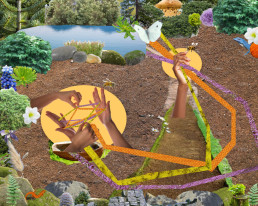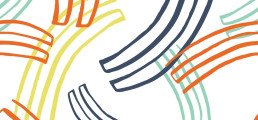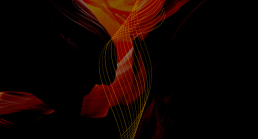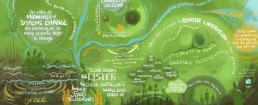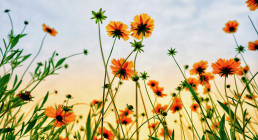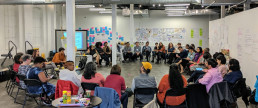People Stitching Earth | Oppression, Healing, Liberation, and Navigating the Terrain In Between
When we made it back home, back over those curved roads
that wind through the city of peace, we stopped at the
doorway of dusk as it opened to our homelands.
We gave thanks for the story, for all parts of the story
because it was by the light of those challenges we knew
ourselves—
We asked for forgiveness.
We laid down our burdens next to each other.Joy Harjo, “Conflict Resolution for Holy Beings,” An American Sunrise
Origin Story
The first beings were not humans or animals or even plants. The first beings were river, rock, lava, and sky. Later came plants, then animals, then last of all, came two-leggeds who became easily lost and had to learn again and again in order to remember their way. This is a story of that journey—one that started in harmony and abundance and has been transformed by settler colonialism, enslavement, and their aftermath: patriarchy, extractive capitalism, collective violence against aki, the earth, and all her inhabitants. The resulting interlocking systems of oppression choke lungs, poison waters, exterminate life, and obscure the sun.
This is not a story about re-making a fictional ideal past. Harmony, in narrative or music does not preclude disagreement or conflict. This is a story about some of the ways we can return to who we truly are and how we are meant to be in right relation to each other and all beings, mortal and immortal, sentient, interdependent, free.
The Journey
During this time of the great sickness—a time of tyranny, violence and greed—people have been harmed deeply by the practices of oppression: disconnection from source (a higher power and understanding of the world as greater than ourselves such as through spiritual, natural, cultural, ancestral, and/or creative practice); dissociation from our physical bodies; distancing from our emotions; and distortion of our stories.1 Some days the effects are overwhelming; the sickness is life threatening. Some days—with rest and soup, with love and community care—there are moments of shared understanding, connection, and transformational shifts in understanding and behavior.
Beyond rest and community care, what makes these moments possible, and the potential for such moments to multiply exponentially, is not one but many things, things that operate across the dimensions of personal, interpersonal, organizational/institutional, and societal/social systems.2 For those of us working as racial equity change makers—whether as internal or external coaches and consultants, including those who work in intersectional roles as healers, artists, and liberation practitioners—there is a familiar route that embraces organic twists and turns and yields movement in the right direction.
The current emphasis in our field on trainings, assessments, and curriculum—which are all good and necessary components of intersectional racial equity and can be catalytic, if used in their full potentiality—are too often leading people into thorny thickets and near cliff edges where they give up, abandoning the journey, or worse, go back from whence they came. This is not to say that these entry points are not useful ways of understanding our contexts and our own behavior in them, but they are insufficient in supporting the integration and embodiment of new ways of being, understanding, and engaging with the world. When we practice the elements of a liberating ecosystem, we enable the seeds of training and assessments to meet the nutrients and environments needed for them to take root and grow.
There are many ways to traverse the multi-faceted and challenging terrain created by the delusion of white supremacy, but overall the best possible paths are moving in the direction of intersectional racial equity that engages people and systems in practices of healing and liberation. We liken this process to a journey in the woods. There are a number of recognizable clearings or places that support visibility and understanding. And it is in these clearings that clarity, commitment, and learning is possible.
Unlike rational and determinist approaches to intersectional racial equity—ones that center assessment tools, analytical instruments, and pre-defined linear processes—we have found that these pathways are open-ended enough to support opportunities to digest learning and engage in intentional action, through which we can engage in cycles of feedback and reflection to support unlearning white supremacy and re-membering our practices of interdependence, mutuality, and stewardship.
Complexity and Justice-Oriented Change
Advancing racial equity is complex systems change, and while working in complexity there are very, very few, if ever, “best practices”. There are more good practices and most situations require emergent and adaptive practices.
Some characteristics of complexity—as outlined by David Snowden and Mary Boone3—are contexts where:
- “Large numbers of interacting elements are involved.
- The interactions are nonlinear, and minor changes can produce disproportionately major consequences.
- The system is dynamic, the whole is greater than the sum of its parts, and solutions can’t be imposed; rather, they arise from the circumstances. This is frequently referred to as emergence.
- The system has a history, and the past is integrated with the present; the elements evolve with one another and with the environment; and evolution is irreversible.
- Though a complex system may, in retrospect, appear to be ordered and predictable [eg. history], hindsight does not lead to foresight because the external conditions and systems constantly change.
- Unlike in ordered systems (where the system constrains the agents), or chaotic systems (where there are no constraints), in a complex system the agents and the system constrain one another, especially over time. This means that we cannot forecast or predict what will happen.”
This articulation of the characteristics of complex systems is helpful. And too, it is important to recognize that indigenous cosmologies and teachings—particularly those from the Americas and Africa—situate a complex world in which binaries and closed systems do not exist. The cynefin model, the sense-making tool that visually represents Snowden’s complexity theory, is itself from native Welsh principles and language. The word cynefin means roughly “place of our multiple belongings.”
The metaphor of a path or route, one that is organic and emergent, has the flexibility to hold the complex nature of the change we are seeking toward equity and liberation. When traveled with practices of power and leadership sharing, committed attention to innerwork, and embracing multiple ways of knowing, we live in iterations of change that both begin to prefigure the world we want and create the necessary conditions for advancing liberation in the world we are currently living in.
Charting the Terrain
Clearing One – A Reflective Pool
There are many ways to gain an understanding of where an organization and team is in terms of living into intersectional racial equity. Many equity practitioners use written or online assessments. Others hold interviews or focus groups. Some establish storytelling circles or work together to develop murals or other forms of visual narrative. Some use a mix of quantitative and qualitative (including artistic) approaches. Regardless of the approach and the associated tools and practices, the purpose is to get a complex, aggregate picture of what is, a picture of the terrain that is so much more than an organizational map. It is a layering of perspectives that helps the organization and its partners gain some sense of the contexts and conditions comprising the culture and lived experiences of people in the organization or network.
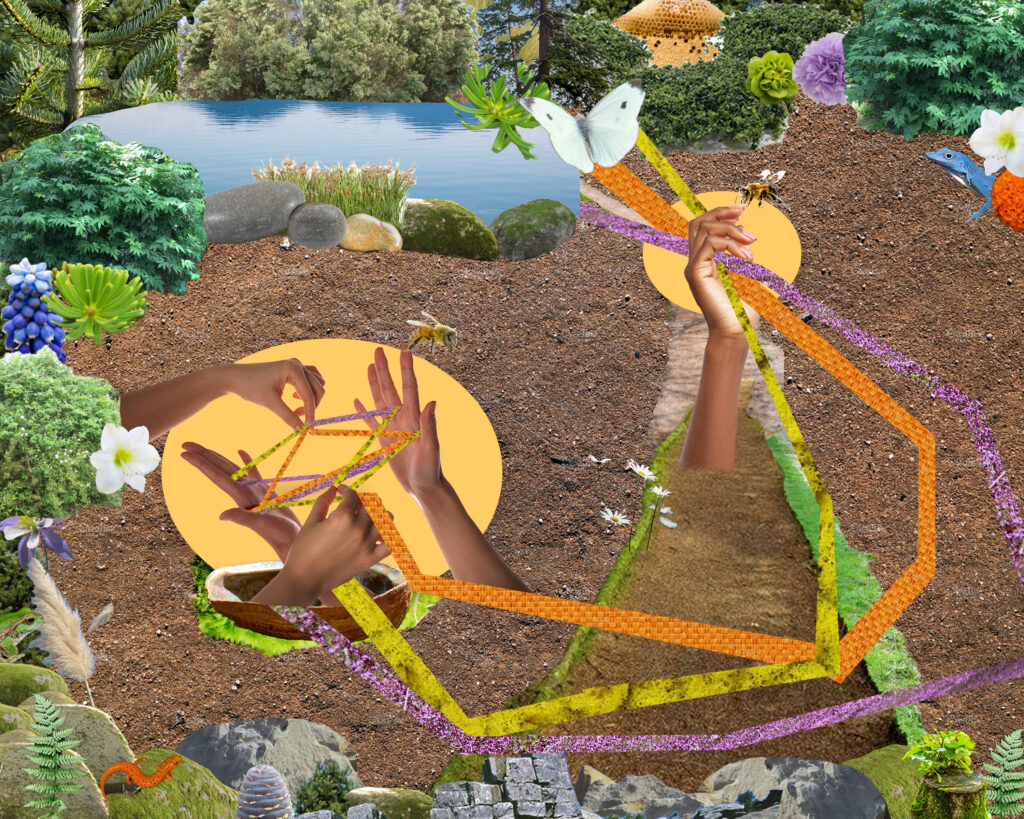
Clearing Two – A Rocky Outcrop
Once a picture of the terrain is made visible, another clearing presents itself. This rocky outcrop is a place where everyone is able to see the full and discrete snapshots of the organization and participate in a shared meaning-making process about what these snapshots might say about the team and the organization. However, collective sense-making requires some shared understanding of the current and historical structures, strategies, and belief systems that benefit some people at the expense of others. This is a juncture in the journey where indepth, whole-system conversations are crucial to restore the very real stories of settler colonialism, enslavement, genocide, wage theft, and extractive capitalism that have largely been disappeared from and or greatly distorted in our education systems. Building on these understandings, teams can also develop a shared understanding of how the continuing impacts of these legacies and other ongoing systems of oppression and inequity interact to perpetuate the manifestations of inequity in our lives and organizations. This discordant recognition is fundamental to the path.
Disagreements about what it all means and why—this generative tension—is what pushes teams and organizations toward deeper understanding. How is it that our shared language is so full of references to militaristic strategies that supported western expansion, manifest destiny and Native genocide? And how is it that the end of the enslavement of African and then African American people has done little to shift the fundamental economic, health, educational—insert just about anything here—disparities between whites and Blacks? The actual questions that teams grapple with have a lot to do with who’s on the team, their lived, racialized experiences, and the depth of their power analysis.
What matters is that teams are moving towards a shared understanding that interrupting current, intersectional racial inequities isn’t possible without having a depth of knowledge about historical inequities and the practices and systems that support their perpetuation. In this rocky outcrop, teams will often read, attend workshops and trainings, participate in caucus or affinity groups to support interrupting internalized oppression and internalized privilege. This learning journey is essential and what it entails depends on who is on the journey together. Among people of similar racialized identities it may mean grappling with global colonialism and the ways that it has impacted different peoples and different families’ histories. Healing often becomes a central focus, calling in ritual and ceremony to support the processing and release of past and present trauma.
This can be a difficult time in an organization. The fallacies that held the team together have been stripped away. But nothing new is yet in its place. It is a time for care and humility. It is a time to support the ingestion and digestion of the pervasive, corrosive presence of racial equity, making space for the restoration of our collective humanity within and across all racialized groups. It is a time for reconnecting to source, reengaging our bodies, reclaiming our emotions, and reweaving the fullness of our stories. This can mean a necessary, intentional, and sometimes scary unmooring in the day-to-day. And too, it is an opportunity for people to show up differently and build the muscle and heart necessary to get to the next evolution in the process. It requires cultivation of courage, humility, and room for risk-taking, as well as tools supporting accountability and collective tending to harm. This place demands space and time. This place requires more of us than we have sometimes been able to give. There is a necessary clarity that comes from such disruptions. As Norma Wong says, “transformation requires agency.” Some people may, in fact, choose not to move with their team or organization. And that is part of the journey too.
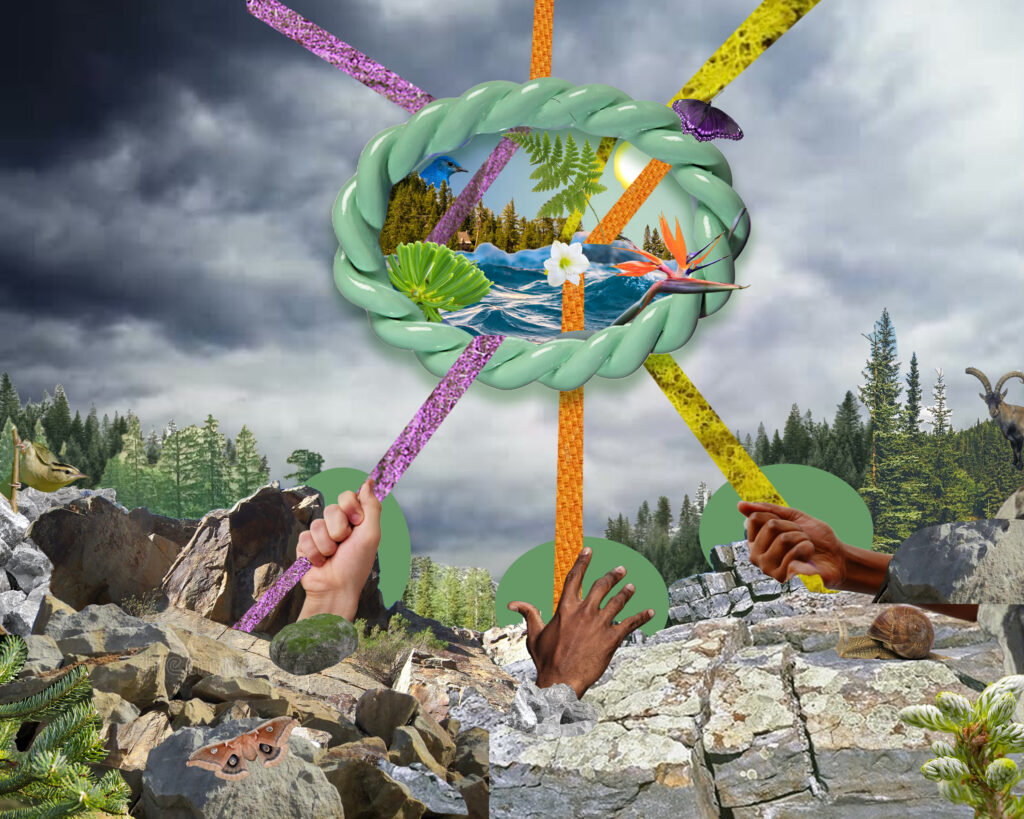
Clearing Three – A Sudden Vista
Through a commitment to authenticity and rigor—and doing the necessary work of deepening our understandings of historical and current conditions that affect our individual and collective experiences—we come to a sudden vista, an opening in our capacity to see a different future. A future where we all have the ability to thrive.
It is here that a visioning process can truly expand our shared picture of a liberated and liberatory future. From this vision, we can outline the values and principles that guide how we be with each other in liberating ways and define some key short term and long term transformation efforts, arriving together at those aspects of the organization that, if transformed, would enable people to experience an actual taste of equity in the immediate term while working on efforts to change the organization overall in the long term.
What we are creating is not new, yet it can be wholly unfamiliar. However, we have everything we need to make this visionary future possible. It simply requires courage, imagination, and the willingness to move as if we have one foot firmly on land and the other submerged in the tumultuous and profuse waters of the sea.4

Clearing Four – A River Flows
Once the vision, values, hopes, and dreams, the team can start developing some focused priorities and goals and the implementation effort begins to flow. But equity transformations are always a mix of inspirational visions and more tangible decisions and practices. Weaving across the two is the art of advancing complex systems change in which we are developing experiments across the organization’s functions and programs. Or it might be one or two short and long term efforts from which the team and organization is continuing to learn and to refine in ongoing cycles of reflection and growth. What matters is that the effort is continuous and fluid, and that the fluidity takes into account boulders, logs, beavers, otters as obstructions are also natural innovations to the existing ecosystems. Throughout this process, the team is meeting current capacity and emerging circumstances in ways in which both the vision of equity and the realization of equity are contiguous tributaries in the river’s powerful flow.
Context Affects the Terrain
While we are all swimming in the torrential waters of racial inequity and other intersectional forms of oppression, we are affected differently. Some are buoyed by floatation devices. Some are carried along by speedboats. Others are fighting to keep their airways above the surface of the water. The same is true for leaders, teams, organizations, and networks.
To make sense of these differing contexts—at all of the levels of racial oppression including internalized, interpersonal, institutional and systemic—we are going to describe differing approaches based on where different types of individuals, teams, organizations and networks live along a white dominant-to-liberatory spectrum: 1) White Supremacy Culture, 2) Multicultural Stance, and 3) Pro Black and Indigenous.
While such classification efforts are inherently overly simplistic, there is sufficient value in outlining different approaches based on these categories, contexts and associated conditions.
1) White Supremacy Culture (aka “The Delusion of White Supremacy & the Culture that Upholds It”)
In an organizational culture of white supremacy, organizations are habituated to working in ways that uphold the delusion of white supremacy whether intentionally or not. These cultural practices have been laid out in the work of Tema Okun and continue to be deepened by other racial equity practitioners. Initially identified as thirteen habits, the framework has evolved to include nuanced descriptions of behaviors that reify inequity, transactional relationships, and oppressive power structures. These cultural habits are exemplified by valuing perfectionism, individualism, fear, right to comfort, competition, urgency—and drive most organizational decisions and overall organizational culture in white dominant organizations.
These organizations are most often:
- White led and/or have a history of white leadership and predominately white staff (not always white-led; may include people of multiple races at various levels of the system but not in large numbers in leadership and if so, not for very long);
- Equity focus is on diversity, equity & inclusion (DEI), with an emphasis on diversity; and
- People exhibit and experience disconnection from source (a higher power and understanding of the world as greater than ourselves such as through spiritual, natural, cultural, ancestral, and/or creative practice); dissociation from their bodies; distancing from their emotions; and distortion of their stories.5
- There are also historically people of color-led organizations that operate predominantly in this fashion; most often they are in areas of work that are deeply steeped in white supremacy culture such as some legal, policy, research, philanthropic and merit-based youth-serving organizations.
Deep equity work in this context focuses on making visible the ways in which white supremacist ways of being and doing are operating as an uninterrogated norm which serves to reify white leadership and the myth of white supremacy and/or undermine the wisdom, gifts, and value of BIPOC people. Organizations in this category are often set up to support the learning, comfort, safety, and power of those in leadership and particularly white leaders. Change processes can unintentionally replicate these patterns at the expense of native people and people of color.
Racial equity change makers will often focus on cultivating equity-based awareness and understanding with white leaders in the system to ready them and thus the organization for deeper equity work. This aspect of the change effort can be very depleting for staff of color in every level of positional power as well as for all staff with less positional power within the system. The tax of this effort is in direct relationship to white leaders willingness, courage and capacity to develop a baseline understanding of structural racism and intersectional elements of oppression. If leaders are resistant to deepening their awareness and/or actively suppressed learning then little progress can be made without developing alternate leadership structures to support the organization in its evolution.
2) Multicultural Stance
In multiracial/multicultural contexts, organizations tend to exhibit characteristics of both white supremacy culture and what Okun would call “antidotes.” In this instance, an organization might be more recently led by people of color and/or have significant numbers of people of color throughout the organization including on the leadership team. In this context, the racial equity and liberation (REAL) work is more often focused on equity, which is made possible by the fact that people in the organization have a solid understanding of structural racism and intersectional elements of oppression.
The organizations are often actively seeking to disrupt the habits of white supremacy culture and people have more shared practice of expressing the harm caused both within and beyond the organization. However, having not yet fully developed the muscles of an equity-based organizational culture, the organization and its leaders will often default to white supremacist ways of working in urgency or in high-stakes decision-making, for example relying on positional power instead of embracing wisdom, experience, and skill-sets from multiple people in the system and therefore have trouble implementing equity-based systems change internally.
While all racial equity work needs to center healing, the work in multiracial/multicultural contexts often necessitates a focus on healing at intra-personal, interpersonal, and organizational levels simultaneously in order to create the needed conditions for equity-based systems change. REAL change in this context is about unlearning our beliefs and related actions as a result of internalized oppression and our complicity with white supremacy as people of color. For white people in all contexts, the work is about interrogating internalized white supremacy so that long standing ways of maintaining privilege are dislodged, making space for new ways of living and being that don’t center whiteness and the power it exerts in explicit and implicit ways. Specifically, in multiracial/multicultural contexts, white people tend to have more systems based understanding but are often still struggling to recognize that impact is not exclusively the result of individual intention. The arc of learning in this context is to develop a more complex understanding of the relationship between “it’s all my fault” and “it’s all the systems fault” in order to recognize that—because of race, power and privilege—they are both simultaneously true. In order to live into this complexity, it calls on all of us to begin to embody new ways of being.
3) Pro Black and Indigenous
In contexts where Black and Indigenous people, wisdom, and cultures are centered, organizations are led and predominately composed of multi-identitied or single-race identified Black, Indigenous and people of color (BIPOC) that have done work to address anti-blackness and anti-indigenity as a collective. The organizational vision and mission are rooted in social justice and liberation. People exhibit greater connection to source. They are in touch with the wisdom of their bodies and their emotions and are resourced by and able to be in whole and simultaneous stories. The focus of the work is beyond equity toward liberation and sovereignty.
In this context, healing work (individual and collective) is both foundational and ongoing as the organizational culture exists in a wider, toxic, and systemically oppressive society. In addition to engaging in healing and liberating practices, liberation requires continuing to address inequities; building our collective muscles for engaging in generative conflict, giving and receiving feedback, and holding each other in loving accountability; in addition to developing and evolving more equitable power structures and practices. It takes collective care and courage to embody and enact the systems, structures, ways of being that emulate the world we want.
There is great potency in this context as it creates the ability to experience some of the new world that we want while still living in the hollowed shell of a decaying, oppressive society. And too, the dissonance between two worlds requires rigorous attention and care on the part of the team as well as humor and love. It is here that we begin to crack open the old and spill toward the new.
“When I dare to be powerful to use my strength in the service of my vision then it becomes less and less important whether I am afraid.”
Audre Lorde
Approaches and Practices
So much of the focus of racial equity-based system change is on tools and frameworks. This tendency reflects the white dominant habit of overvaluing numerical data and the written word. While surveys, assessments, numerical analysis and the frameworks that outline how to apply them are valuable, they will not, in and of themselves, lead to intersectional racial equity let alone liberation. What will lead to equity is changing both what we do and how we be together. Assessing where an organization in terms of racial equity is the first tiny step and can be harmful if other steps don’t follow.
The Elements of Transformation
We have found that the most essential approaches to advancing intersectional race-equity systems change are those rooted in the elements of transformation toward liberation acting as the five fingers of one hand:
- Deep Equity & Liberation
- Complex Systems Change
- Leadership & Power Sharing
- Innerwork
- Multiple Ways of Knowing
What we are up to in our justice work boils down to equity and liberation whether we are talking about environmental justice, gender justice, educational access, or any of the social and economic harms resulting from the legacies of slavery and colonialism in the U.S. Advancing this kind of change IS complex systems change. In order to lead complex systems change, we must expand our understanding and expressions of leadership to embrace power-sharing and collaborative action. Leading together in this way requires innerwork, so we can be present for and resilient with change, and expanding how we know and what is considered wisdom in order to dislodge the dominance of white, western culture. This is individual and collective work. We have written extensively about this. For a deep dive, please read our blog on Practicing the Elements of a Liberating Ecosystem and earlier articles published in the Nonprofit Quarterly (NPQ): Pursuing Deep Equity, Cultivating Leaderful Ecosystems, Embedding Multiple Ways of Knowing, Influencing Complex Systems Change, and Centering Inner Work.
Equity-Focused Teams
In organizations and networks, particularly majority white and/or white dominant culture and multiracial/multicultural ones, any equity focused effort needs to be supported by an internal equity team—one that draws on the organizational diversity in terms of roles, experiences, expertise and identities. In order to advance equity, there needs to be an aligned and skilled group to shepherd change that has the credibility to champion emerging changes. Some of the qualities of equity team include:
- people committed to equity;
- people who have some lived experience of the effects of intersectional and systemic racism;
- people committed to the mission and vision of the organization;
- people who have either have the decision-making power and/or influence ability to advance change;
- people willing and able to commit to the time and effort equity efforts will require (note: the organization needs to be sure to make this focus and attention possible, e.g. this can not be an additional item added to people’s work expectations without removing other things);
- people able to hold confidentiality (share learning not other people’s information) and
- people able to engage in difficult conversations and see the potency of generative conflict
In contexts where Black and Indigenous people, wisdom, cultures are centered and organizations are rooted in a liberatory stance, the commitment to and experience with advancing racial equity exist across the organization and power is shared more broadly. In this context an equity team may or may not be necessary. Rather equity transformation efforts can be held in existing structures and team compositions. Racial equity coaching and consulting support in this context is even less about the doing and more about the being, tending to the complexities of transformational change in interracial teams and organizations while existing in a violent, toxic, and oppressive society.
Internal Skill Development
In all contexts, advancing intersectional racial equity requires that we develop and/or deepen our skills in being deeply present, loving, and human with one another. It means we need to lift one another out of survival states—where all energy is necessarily focused on getting our basic needs met—and cultivate the ability to be present to past and current suffering, giving voice to what has been unspeakable, entering conversations from a place of deep curiosity, and being willing to engage with difference—different perspectives, experiences, ways of making sense of the world. We do this because the change we seek actually requires all of us. It will not happen because of a few exceptional leaders. American exceptionalism is actually part of the knot that binds us in deeply inequitable ways.
Depending on their context, as outlined in the earlier section, and the existing experiences and expertise of different teams, new skills and/or muscles (as the nascent skill may actually exist it is just underutilized) will need to be developed. That said, there are some foundational skills and/or muscles needed to advance racial equity and the interdependent elements of a liberating ecosystem. They are:
- the ability to engage in generative conflict—actually embracing difference and the ways it can lead to conflict as a source of creativity and change;
- providing real-time affirmative and critical feedback on how we are impacting one another so that we can learn and grow;
- recognizing that organizations, leaders, teams and networks need supportive structures and practices to survive in all times and most certainly to thrive during equity change efforts so be sure to get your foundation set before building something new; and
- holding loving accountability with one another – “the practice of loving accountability consists of honest and authentic communication, vulnerability, and the willingness to hold each other accountable for our impacts—beyond just words. If a collective value or guiding principle is repeatedly violated by someone, and no amount of communication and support can interrupt it, then loving accountability instructs us in employing meaningful consequences—not as punishment but rather as ensuring the health of the collective through meaningful boundaries.”6
Depth of Engagement
Any authentic, intentional and focused effort to advance intersectional racial equity has the potential to lead to transformational change. Such change could be evidenced by significantly increased understanding of systemic racism and the ways internalized supremacy is playing out in a white leader’s priorities and decision-making. Transformational change could look like a BIPOC team’s success in deepening its generative conflict muscles and being able to really unpack unspoken assumptions and internalized oppression in order to create new ways of advancing its vision and mission that supports the team in being and acting from liberation.
There is no “right approach” to support equity-based systems change. Rather there are necessary nutrients to ensure such an effort will seed, root and flourish. These nutrients are similar whether we are providing one on one coaching, team facilitation and support, or an organization-wide equity change effort. While all plants require differing amounts of sun, water, warmth, all require the fundamental macronutrients of carbon, hydrogen, nitrogen, oxygen, phosphorus, and potassium.
- Clear sense of purpose of and strong commitment to equity effort and its alignment with vision, mission and strategies;
- Willingness to let go of existing practices, structures and approaches and experiment with new ways of being and doing in order to change, learn and grow;
- A recognition that the wound of intersectional racism is still festering and any effort to heal and transform it brings with it the possibility of new injuries, discomfort, alternating periods of remission and acute illness and requires an enduring commitment to stay the course.
As individuals and teams evolve their application and wisdom of intersectional race equity and liberation, there are some frequent markers of understanding that mark this transformation. We draw these from some of the components of Jay McTighe’s and Grant Wiggins’ Understanding by Design framework.7
Perspective
Regardless of the context they are in, individuals and teams are able to articulate and apply the importance of race equity work in their day to day intentions, priorities, and decision making.
Empathy
In all contexts, individuals and teams are deepening their capacity to listen and see and feel things from different points of view and honor the lived experiences and perspectives of one another all while moving toward equity and liberation.
Self and Group Knowledge
People demonstrate a recognition and ability to grapple with their biases, triggers, and self perceptions in order to deepen their own and the team’s capacity for equity-based systems change.
These markers reflect some of those outlined in the modes of the Liberatory Design8 cycle, although those modes are stages of a process and what is being outlined here are markers of understanding, how you might know things are shifting in meaningful ways. Nonetheless, Liberatory Design provides an integrative approach—weaving across design thinking, complex systems change, and racial equity— and serves as another way of thinking about cognitive and behavioral approaches to change rooted in experimentation.
Moving through an Unfamiliar Present Makes Possible an Equitable and Liberatory Future
To live as if. It is not easy. Inner work and our cultivation of the capacity to be present, to see what is, to be part of the rapid, long and slow process of evolution, revolution, to breathe through it all is so necessary. Throughout this work we will dance and sometimes stumble and fall. Our cores must be both strong and flexible; and it takes all of us to reach our appendages toward each other, to lift one another up.
The world depends on us. Race equity and liberation (REAL) work gets us closer to holding each other in a field of love, from which place so many of the ills of the world are healed. As Paula Gunn Allen writes in Grandmother’s of the Light:
“It is said at the time of the beginning, the Goddess will return in the fullness of her being. It is said that the Mother of All and Everything, the Grandmother of the Sun and the Dawn, will return to her children and with her will come harmony, peace and the healing of the world. It is said the time is coming. Soon.”
We are here to turn the wheel toward a new beginning. One in which all of her children are free.
Collage credit: Naima Yael Tokunow
Originally published at Change Elemental
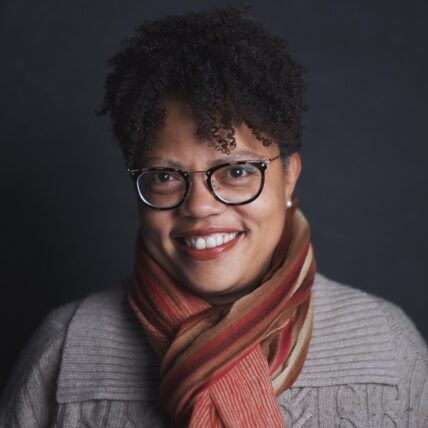
Elissa Sloan Perry (any pronouns used with respect) is of African and Mississippi Choctaw descent, hails from Missouri, and is a 30-year resident of California. She supports people with a vision for an interdependently thriving people and planet to be better in what they do. Elissa joined Change Elemental in 2013 as the Program Catalyst for the Network Leadership Innovation Lab, became CoDirector in 2015, and transitioned to the Leadership Hub in 2021.
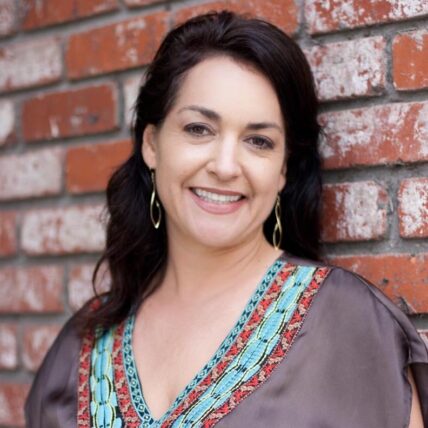
Aja Couchois Duncan (she/her/we) is a San Francisco Bay Area-based leadership coach, organizational capacity builder, and learning and strategy consultant of Ojibwe, French, and Scottish descent. A Senior Consultant with Change Elemental, Aja has worked for 20 years in the areas of leadership, equity, and learning.
1 This framework for understanding the ways oppression separates us comes from the profound and inspiring work of Monica Dennis.
2From the work of Camara Phyllis Jones, “The American Journal of Public Health,” Levels of Racism: A Theoretic Framework and a Gardener’s Tale 90, no. 8 (August 2000): pp. 1212-1215, https://doi.org/10.2105/ajph.35.12.1319, and john a. powell, “Structural Racism: Building on the Insights of John Calmore,” North Carolina Law Review 86 (2007): pp. 791-816.j
3David J. Snowden and Mary E. Boone, “A Leader’s Framework for Decision Making,” Harvard Business Review, November 2007, pp. 1-9, https://doi.org/https://www.systemswisdom.com/sites/default/files/Snowdon-and-Boone-A-Leader’s-Framework-for-Decision-Making_0.pdf.
4“one foot in the water / one foot in the sand is where I hear the best.” Alexis Pauline Gumbs, Undrowned: Black Feminist Lessons from Marine Mammals (Chico, CA: AK Press, 2020).
5 This framework for understanding the ways oppression separates us comes from the profound and inspiring work of Monica Dennis.
6Aja Couchois Duncan and Kad Smith, “The Liberatory World We Want to Create: Loving Accountability and the Limitations of Cancel Culture,” NonProfit Quarterly, May 19, 2022, https://doi.org/https://nonprofitquarterly.org/the-liberatory-world-we-want-to-create-loving-accountability-and-the-limitations-of-cancel-culture/?utm_content=208660872&utm_medium=social&utm_source=linkedin&hss_channel=lcp-542508.
7David J. Snowden and Mary E. Boone, “A Leader’s Framework for Decision Making,” Harvard Business Review, November 2007, pp. 1-9, https://doi.org/https://www.systemswisdom.com/sites/default/files/Snowdon-and-Boone-A-Leader’s-Framework-for-Decision-Making_0.pdf.
8“Introduction to Liberatory Design,” National Equity Project, https://www.nationalequityproject.org/frameworks/liberatory-design.

Network Weaver is dedicated to offering free content to all – in support of equity, justice and transformation for all.
We appreciate your support!
donate in the box above or click here
What is Network Weaving? - Q & A with June Holley
June Holley is a Wellbeing Blueprint signer who has been weaving networks, helping others weave networks and writing about networks for over 40 years. We recently sat down with June to define network weaving and help us understand how it can be a game changer in building our collective capacity to bring about social change.
Q: What is network weaving?
A: Network weaving is something that we all do. It’s paying attention to the relationships around you and noticing who’s missing, who’s not being listened to, and helping create healthier, deeper relationships. You do this by bringing new people in, by connecting people within your existing networks, and helping them get to know each other so they can work together.
Q: What is the difference between networking and network weaving?
A: When people think of networking, they think of passing out business cards to people at a conference and selling themselves. So networking is all about yourself. But when you move to network weaving, it’s about the community. It’s about the people around you and helping them build a network that can be capable of support and action. It’s a pretty different thing.
Q: What does network weaving have to do with building a country where everyone has a fair shot at wellbeing?
A: The concept of wellbeing is really complex and there are a lot of pieces to it. It might be about health access, it might be about creating a safe community. But before people can begin to work and co-create these kinds of things in their community, they need to know each other deeply. They need to be able to trust each other so they can work together. Working on the network and relationships is about creating the foundation, the fertile ground, on which aspects of wellbeing can emerge. So the more time you invest in building relationships, the easier it will be to work together on wellbeing.
Q: What’s one thing someone can do to start network weaving?
A: One of my favorites that you can do at every meeting you have is called speed networking. It’s a way to help people either get to know people that don’t know each other, or help to deepen relationships.
It goes like this: you ask people to stand up and find somebody they don’t know or don’t know well. And then you give them a juicy question like, “What’s keeping you up at night?” Or “What’s something about yourself that not many people know?” And you give them about five minutes to talk back and forth. Then you have the group come back together to debrief. You can ask them what made their partner a good listener. People will list things like eye contact, nodding, asking good questions, feeling really heard, etc.
Now that the group has established some guidelines for good listening, you ask everyone to pay attention to their listening skills in the second round. Then you give them another question, they go off and talk to somebody different this time. After the group reconvenes, everyone can share out the difference they noticed during this round. Often people will say they noticed themselves being a better listener and getting more out of the conversation.
There are lots of very easy, small things that you can do to interact with people in new ways that are much healthier and lead to much more effective and interesting actions.
Learn More
- For tools, resources and events, visit dev.networkweaver.com.
- For an introduction to June’s thinking around network weaving, check out her collection of posts on Medium.
- To ask questions and connect with a community, join the Network Weaving Facebook group.
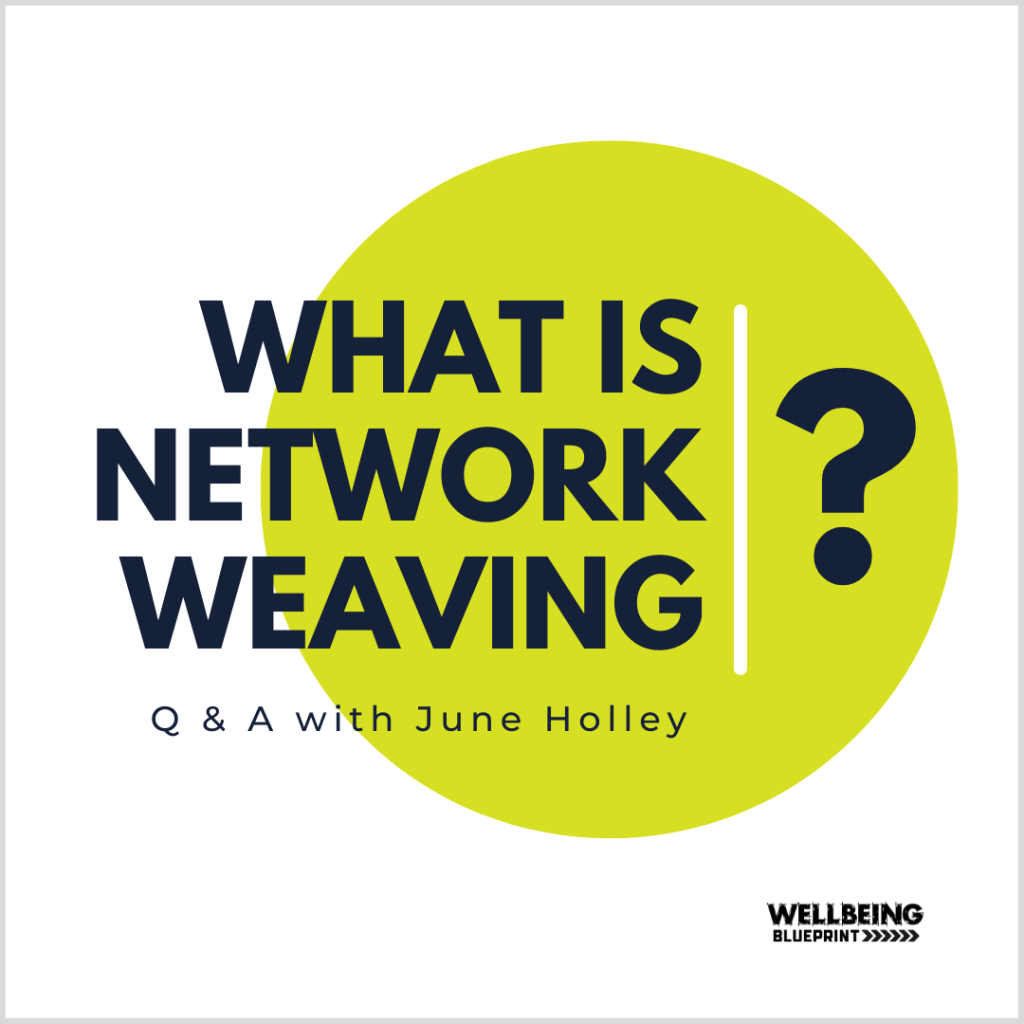
You can also download a pdf with a link to this interview to save to your personal library by visiting the Network Weaver Resource Page.
Originally published at Wellbeing Blueprint

Network Weaver is dedicated to offering free content to all – in support of equity, justice and transformation for all.
We appreciate your support!
donate in the box above or click here
Reclaiming Care Beyond Roe v. Wade
When the state cannot guarantee our safety, we turn to community as our ancestors did
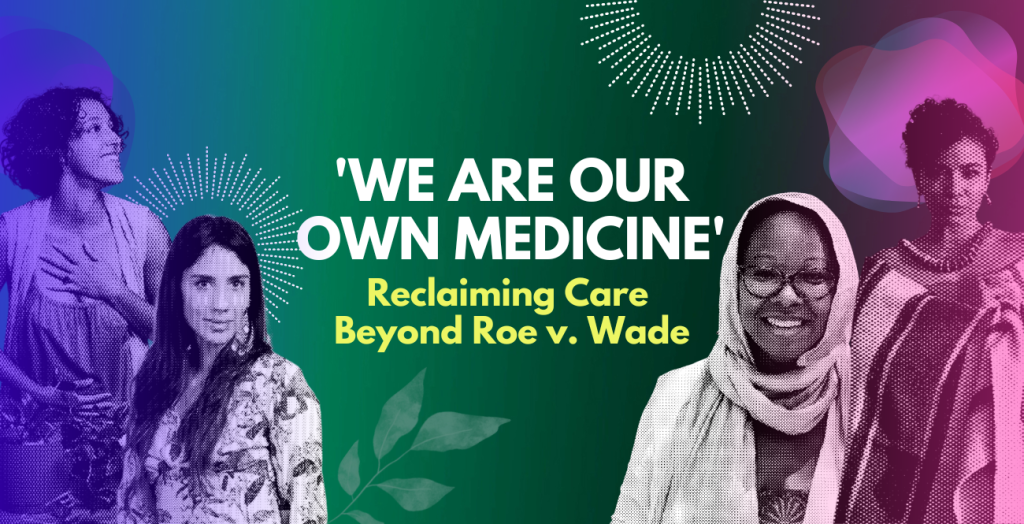
On June 24, Roe v. Wade was overturned by the Supreme Court after nearly 50 years as precedent.
Weeks before, in response to the leaked decision, Resonance Network hosted ‘We Are Our Own Medicine,’ a gathering grounded in community, storytelling, and ancestral wisdom. Alongside Black and Indigenous healers of various traditions, we came together knowing what our ancestors have known for generations: the state cannot guarantee our safety — it never has.
In the US, incarcerated, disabled, undocumented, poor, queer and trans folks, and survivors have been denied reproductive rights, bodily autonomy, and care for decades. Because this violence lives in our history — and shared reality — we gathered to learn from and share stories from ancestors — past and present — who’ve lived this experience.
In short, when the state cannot guarantee our safety, we turn to community as our ancestors did.
Below is a constellation of wisdom from ‘We Are Our Own Medicine.’
* * *
Deoné Newell — Women’s Empowerment Coach
Deoné is a Navajo/Black entrepreneur, Breathwork Facilitator and Women’s Life Coach. As a woman who hails from the Navajo Reservation (Window Rock, AZ), and has seen the effects of systemic oppression and generational trauma firsthand, Deoné has dedicated herself to making ancestral healing, and its forgotten wisdom accessible to as many BIPOC women as possible.
Karen Culpepper—Clinical Herbalist/Educator
Karen has been a practitioner and bodyworker for over 14 years, focusing her work on intergenerational trauma and its impact on physiology and womb restoration. Her study of cotton root bark as an abortifacient and source of sovereignty for descendants of captured Africans in the US and beyond offers insight into the role of plant spirit healing in the context of political changes.
Qiddist Ashé—Founder, The Womb Room
Qiddist is a medicine woman and female health educator. Informed by her maternal lineage of Ethiopian midwives and her own work in authentic midwifery, functional health, herbalism, somatics, and spiritual sovereignty, Qiddist merges the science and the spirit of female health, orienting to all the ways we can reclaim agency and responsibility for our bodies and our lives.
Camila Barrera Salcedo—Doula/Midwife/Educator
Camila is a mother of 3, doula, midwife, sexuality therapist, and holotropic breathing and fertility therapist. She delves into the unconscious via the physical body to identify blocks that disrupt the evolution and transformation of individuals. She develops workshops to re-establish the feminine consciousness through acceptance and knowledge about the body and its processes.
originally published at The Reverb
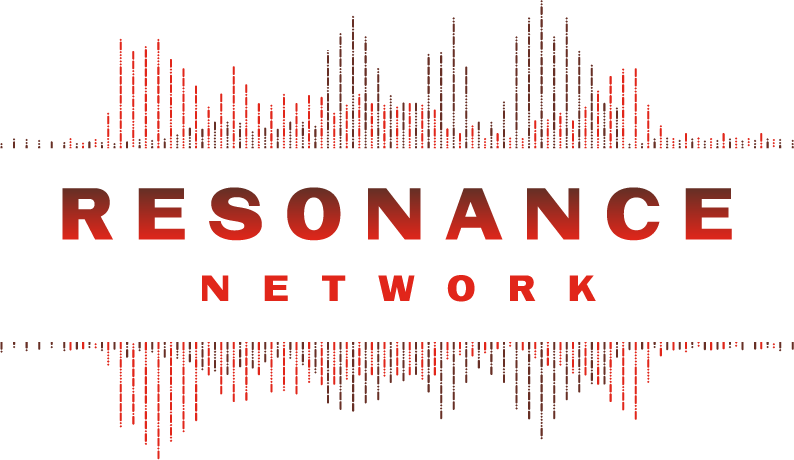
Resonance Network is a national network of people building a world beyond violence.

Network Weaver is dedicated to offering free content to all – in support of equity, justice and transformation for all.
We appreciate your support!
donate in the box above or click here
Weaving Networked Action for Systemic Change - A Practical Guide
This short guide synthesizes the practice of weaving for leaders, social entrepreneurs, and facilitators looking for holistic ways to co-create systemic change.
Written by Namrata Arora & Adrian Röbke as members of The Weaving Lab.
Introduction: Systemic Change Towards a Thriving World
We find ourselves in intensifying personal, societal and ecological turbulence. Our societies are transitioning and natural ecosystems are eroding at an alarming rate. We are at a collective choice point: How we act right now will determine if the planet remains livable for humanity and many other species [1].
On the bright side, many are contributing to societies that honor the fundamental interrelation of people and the planet. Now, there is a great need to share power and re-imagine our systems together. We are called to learn our way into a more beautiful expression of being human together.
Since ancient times, communities of people have gathered to resolve issues, share concerns, celebrate, mourn and partake in each other's 'human beingness'. These traditions are rooted in indigenous cultures and continue in many cultures [2]. Based on these lineages, there is a growing body of knowledge that supports emergence through collaboration [3].
Yet, we still lack individual and collective capacities to align across our differences. It is therefore essential to learn how to weave. Weaving entails interconnecting people, projects and places in synergistic and purposeful ways [4]. This short guide introduces you to specific mindsets, skills and practices to catalyze systemic changes.

Weaving in Action - Stories from The Field
To center our exploration of weaving in real life, here are three stories of inspiring weaving in action:
- Fundación Mi Sangre has the purpose to co-create a culture of peace in Colombia. They convene people from the military, government, teachers, parents and youth. For 15 years they created awareness, learning, and innovative practices and were able to impact the lives of 1,5 million people.
- The Bioregional Weaving Labs (BWL) Collective takes collective action across Europe to make climate and biodiversity plans more actionable. They weave their expertise, knowledge, and teams to restore, protect, and regenerate landscapes and seascapes. Through mapping the needs of bioregions, they can address root causes through nature-based solutions.
- Service Space, one of the world’s largest volunteer-run international organizations, believes that small, collective acts can transform the world. Started in 1999, they aim to bring meaning to the front and center of our lives. Service Space connects people from around the world, catalyzing collaboration to spark the spirit of generosity, making the world a better place through meaningful action.
These initiatives have in common that they foster inclusive collaboration, which is enabled through specific weaving ways and practices.
Weaving Ways and Practices
Weavers foster coherent, purposeful and synergistic communities and social ecosystems. Through the use of liberating structures that are grounded in our 'interbeing', they facilitate inclusive conversations, cross-pollinate knowledge and align action [5, 6]. Gathering together in a formal setting is not necessarily weaving. If there is an expression of compassion and interrelatedness of self, others and the planet, weaving is in play. Throughout six years of action research, 300 + weavers from diverse cultures in The Weaving Lab identified four specific ways and practices:
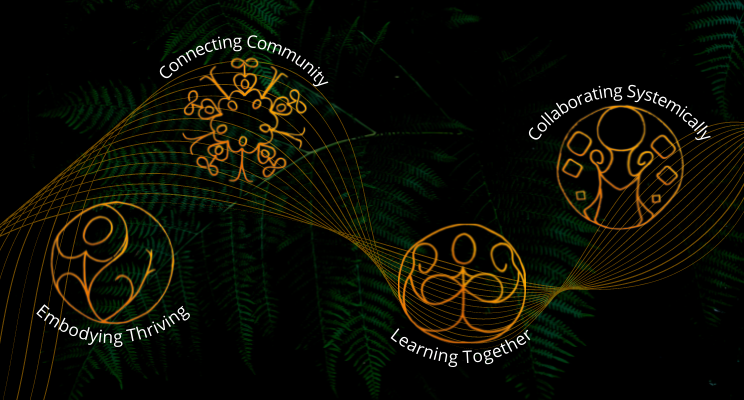
1. Embodying Thriving - Becoming inclined and equipped to thrive through practices that nurture personal, societal and ecological wellbeing.
2. Connecting Community - Creating conditions for diverse and inclusive communities in which people feel belonging and have a shared purpose.
3. Learning Together - Developing processes for cultures of continuous sharing, improvement and experimentation.
4. Collaborating Systemically - Fostering cooperation for strategies that transform systemic mechanisms and mindsets.
Embodying Thriving

Weavers become inclined and equipped to thrive through practices that nurture personal, societal and planetary wellbeing [7]. They embody life-affirming qualities and virtues. Inner and outer development are truly interdependent. Personal well-being includes emotional, physical, mental and spiritual dimensions and our sense of belonging, purpose and contribution. Societal well-being relates to how we create cultures that center on equity, thriving and justice. Planetary well-being refers to the thriving of all species, ecosystems and places. Weavers bring these different layers together in a coherent practice.
Weavers cultivate virtues and steward thriving cultures:
- Cultivating an inner awareness to stay present in uncertain situations.
- Showing up with vulnerability and heart-centered listening.
- Developing compassion for diverse people and beings.
- Being playful and creative in the face of challenges.
- Fostering wisdom through continuous inquiry.
- Embodying resilience in the face of adversity.
Reflection Question: What personal and collective practices to embody thriving more fully do you want to learn?
Connecting Community

Weavers create conditions for diverse and inclusive communities in which people feel belonging and have a shared purpose. They foster trustful, nourishing and dynamic relationships through patience and frequent communication. Sharing personal stories, needs and dreams are great ways to begin. As a solid foundation of trust is developing, people start to feel a sense of belonging. We are woven into an intricate web of life including diverse species and places. It is therefore critical to foster significant relationships with the wider natural world. And, to learn from nature's principles how to participate in diverse ecosystems.
Specific practices:
- Supporting the ecosystem through difficulties, roadblocks and failures.
- Maintaining momentum and direction through continuous alignment.
- Co-creating lived experiences of oneness with the web of life.
- Facilitating differentiated roles and sub-communities.
- Expanding distributed power and decision-making.
- Stewarding a common culture and identity.
Reflection Question: What skills do you want to learn to better support your communities to become more interconnected and aligned?
Learning Together

Weavers steward processes for cultures of continuous sharing, learning and experimentation. Learning is an ongoing process of 'becoming', which takes humility and perseverance. It is therefore essential to adopt a growth mindset, question blind spots and reflect often. Real learning happens when people meet between diverse perspectives and ways of knowing. Weavers, therefore, co-develop community-wide learning values, principles and aspirations. These are the basis for action-learning approaches that are grounded in the coherence of the head, heart and hands. Through constant learning, the ecosystem can remain adaptive and resilient in ever-changing circumstances.
Specific Practices:
- Designing, facilitating and harvesting collective learning experiences.
- Translating and contextualizing dynamic flows of learning.
- Using storytelling and visualizations to communicate.
- Developing reflective and contemplative practices.
- Collecting, synthesizing and evaluating data.
- Creating generative experiences in nature.
Reflection Questions: How can you center a beginner's mindset in your approach to weaving?
Collaborating Systemically

Weavers foster collaborative strategies that transform systemic mechanisms and mindsets. They seek to tackle the root causes of challenges instead of symptoms. This means paying attention to underlying systemic dynamics through sensing interconnections, relationships and energy flows. It is then possible to tackle root causes and leverage points for systems change. Based on these, an ecosystem can then implement targeted interventions. Over time, aligned action can fundamentally challenge and replace dominant institutions, mindsets and structures. So, through synergizing diverse efforts, it becomes possible to move a system towards a more thriving state.
Specific practices:
- Checking the health of an ecosystem and catalyzing continuous evolution.
- Co-creating, adopting and spreading transformative innovations.
- Supporting developmental evaluation to stimulate adaptation.
- Integrating theories of change of diverse collaborators.
- Organizing and resourcing strategies and projects.
- Mapping systems, networks and feedback loops.
Reflection Question: How can you support your collective to address systemic root causes through targeted action?
The Weaving Process ~ Learning from Circle Work
In order to understand how weaving works, we take one of its applications, 'Circle Work' and elucidate the process that it entails [8]. In 'Circle Work', a group of participants who align with an agenda gather together for co-sensing and co-creation, led by a skilled convener, who offers to hold space for emergence using a set of guidelines, a time frame and a purpose as the three guideposts. While ‘Circle Work’ has been around since ancient times, practiced by various indigenous cultures, its more modern applications range from community action to education to employee engagement. Even though the purpose of the gathering may be predefined, however, owing to its emergent nature, the outcomes of the session(s) cannot be predetermined.

The Working of a Circle
'Circle Work' starts with an articulated intention that is driven by a purpose and aligns with a group of potential participants. The circle convener volunteers to be a ‘space holder’ for what might want to emerge from the collective. A circle is situated in a specific moment of time, given a context that resonates with and binds a group of people who might be willing to gather in a space that is earmarked for weaving. This could be a virtual or physical space that is neutral and may provide a sense of safety for free expression.
Various elements which are at interplay in the process of weaving include human elements and non-human tangible and abstract elements. Human elements include the Circle Convenor or Weaver and participants; tangible non-living elements include the physical environment including 'Circle Principles' (guidelines which enable the creation of a safe space for sharing), sound, space layout and intangible elements include time, space, intention and consciousness of all those who are present.
A multitude of factors governs the nature of interplay among these elements making each circle experience unique and irreplicable. When in a circle, participants can be said to experience a transference of consciousness among themselves and with the center of the circle, thus unfolding and giving form to the group's emergent collective intention. It is for this reason that presencing is a key aspect of any weaving. Our individual state of being has a deep impact on what emerges in the collective.
The Flow of Circle Work
The proceedings of a circle start with a brief centering exercise in the form of meditative music or the playing of a singing bowl or the reading of poetry or spiritual text or simply leading participants into a mindfulness activity such as breathwork. Bringing all participants into their presence invokes the sacredness of the space. In a physical setting, the center might be set up as an altar with flowers, water, incense, a lamp and other elements that the host might find appropriate.
This centering is followed by a reminder of the circle principles or guidelines for engaging with the circle. These principles are to be viewed as gentle scaffolding and may be reviewed and revised by all as necessary. They uphold the core values of deep listening, confidentiality, inclusion, respect and authenticity that guide the circle members through their time together.
An open-ended question leads circle participants into the circle, thus setting the stage for the theme that might be pre-decided. Anchoring the circle in an inquiry enables a common purpose to unfold, thus allowing for new insights and action steps to emerge through a shared resonance among participants.
As the circle progresses, participants gain an opportunity to practice deep listening, thus opening themselves to new ways of thinking. Circles cultivate compassion and create a sense of inclusion for all. When convened on an ongoing basis, circles create a feeling of belonging and provide a fertile ground for sustainable change to take roots.
The closing of a circle is marked by a checkout which might be in the form of brief reflections by all or a compassion prayer, wishing well for all. A theme for the next circle might emerge at this point, thus allowing for the circle to ‘remain unbroken’ till the next gathering.
Success Criteria
Embodying gratitude, all participants are encouraged to empty their bowl of expectations and use the opportunity to offer their precious gifts, including deep listening and honoring silence when it is collectively called for.

Various formats of circles or related gatherings, referred to by a variety of names, are now being practiced around the world and signal the onset of a 'movement of movements [9].
Now What? - Our Invitations
1. Deepen your unique style of weaving
The beauty of working collectively is that you inherit your unique niche and synergize your role with that of other weavers. We, therefore, invite you to further experiment and make these practices work in your context.
2. Learn, co-create and spread weaving ways and practices
Together we can further build the field of weaving. This means learning, exchanging ideas and innovating together. So, find and co-create the spaces that nourish your learning.
3. Dive into additional resources, tools and perspectives
There are many articles, books, and guides out there that you can explore. To dive into more specific topics, you can use the hyperlinks in this article. To access further resources, review the references.
We invite you to join us in the inquiry of 'how does one balance the interplay of flow and outcome through the weaving process?' There is no formula for ensuring this balance and this is where the context of the individuals, the collective and the shared intention or purpose play a key role. While emergence is constant, the duration that it takes to accomplish the outcome of a weaving process might vary. There is no endpoint to weaving. We are part of a continuous process of evolution that always evokes new questions, challenges and opportunities.
Conclusion: Cultivating Our Weaving Practice
The Weaving Ways and Practices are an open-ended exploration of making sense of weaving. There is a wide variety of skills to learn and we cannot do that by ourselves. So, we warmly invite you to share your thoughts about this article. It is in the messy field between perspectives and worldviews that we can engage in weaving fully. Let us dream, dare and do everything in our power to co-create a more thriving world. We end with this poetic reflection, hoping it provides you with the inspiration we need to cultivate this work in our world:
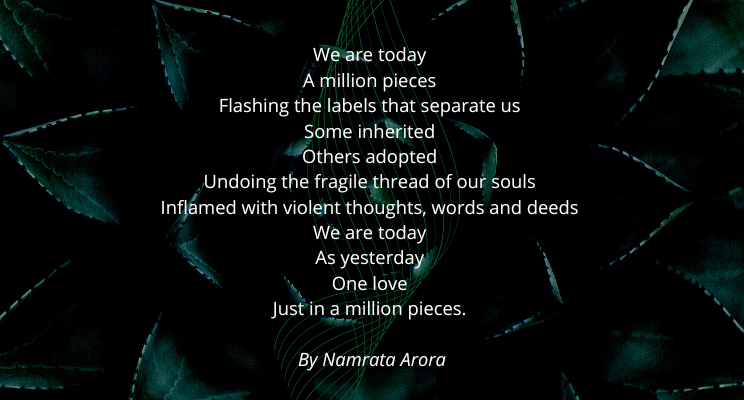
Acknowledgements and Gratitude
We thank every contributor to The Weaving Lab for the countless heart-centered conversations that created the weaving ways of practices. Specifically, we appreciate Tjin Tjoelker, Victoria Haro, Ben Roberts, Ross Hall, Carolina Obara, Kai Brouwer, Robyn Whittaker and Nick Graham for their generous feedback. Lastly, we acknowledge every one of you who is embodying more thriving on the planet, including the land and our non-human kin.
About The Authors

Contact her via: LinkedIn or E-Mail.

Contact him via: LinkedIn or E-Mail.

You can also download a pdf with a link to this guide to save to your personal library by visiting the Network Weaver Resource Page.
Resources
[1] State of the World:
- Climate Change 2022: Impacts, Adaptation and Vulnerability by IPPC
[2] Indigenous Knowledge:
- Sand Talk - How Indigenous Thinking Can Save the World By Tyson Yunkaporta
- Braiding Sweetgrass by Robin Wall Kimmerer
[3] Regenerative Leadership & Networks:
- Designing Regenerative Cultures by Daniel Christian Wahl
- Regenerative Leadership - The DNA of life-affirming 21st-century organizations By Giles Hutchins & Laura Storm
- Leading from the Emerging Future: From Ego-System to Eco-System Economies by Katrin Kaufer and Otto Scharmer
- Impact Networks: Create Connection, Spark Collaboration, and Catalyze Systemic Change by David Ehrlichman & The Converge Network.
[4] Definition and practice clusters by The Weaving Lab
[5] Facilitation:
- The Surprising Power of Liberating Structures: Simple Rules to Unleash A Culture of Innovation by Henri Lipmanowicz and Keith McCandless
- The Art of Hosting
[6] Inner Development:
- Thich Nhat Hanh Interbeing: The 14 Mindfulness Trainings of Engaged Buddhism
[7] Thriving:
- The Age of Thrivability: Vital Perspectives and Practices for a Better World by Michelle Holliday
- Thrive: The Third Metric to Redefining Success and Creating a Life of Well-Being, Wisdom, and Wonder by Arianna Huffington
[8] Hosting Circles:
- The Magic of Circle Work by Jalaja Bonheim
- The Circle Way by Ann Linnea and Christina Baldwin
- A Millionth Circle by Jean Shinoda Bolen
[9] Blessed Unrest by Paul Hawken
Originally published HERE
featured image found HERE

Network Weaver is dedicated to offering free content to all – in support of equity, justice and transformation for all.
We appreciate your support!
donate in the box above or click here
What do we mean by “community”?
Since the inception of Building Belonging, we’ve wrestled internally with this question: what are we? On our homepage we say we are:
A home for people committed to building a world where everyone belongs… We are a community of people working toward transformation and liberation: of ourselves, our societies, and the world.
And yet our gathering place is on Mighty Networks; so clearly we see ourselves at some level as a network as well.
So we’re a home. And a community. And a network. What does that mean, exactly? How do we organize ourselves? How do we make decisions? And as money flows through the system and we face the legal/financial imperative to adopt a structure… are we also an organization?
I don’t want to speak for Building Belonging here; we are in the middle of our second interim Stewardship Process, precisely to take a collective perspective on questions like this. But I did want to share my own intentions in case it’s helpful to others wrestling with these questions in their own communities/networks/organizations; I see this question as a key point of differentiation in the social change ecosystem that feels important to name.
1. I am interested in building a community, not an organization. I love this definition from
Aaron Goggans and team at Wildseed Society (which I see as a kindred initiative to BB):
We define community as a group of people with such important or valuable interrelationships that it is easier to have the difficult conversations than walk away. It’s a space where we agree to labor together to root out domination from our praxis and replace it with more liberatory ways of meeting our needs.
2. The kind of community I’m interested in co-creating is synonymous with the concept of “political home.” That is, it must contain two components. A “home”: a space of nourishment, resilience, support, safety, deep commitment to each other, and comfort. And it must also be “political,” meaning we are gathering in order to transform: ourselves, each other, and the world. It’s a space of stretch, of intentionally pushing ourselves to change material conditions in our community (as a fractal) and in the world.
There are other communities that are only or primarily about “home,” and communities that are only or primarily about “political.” Building Belonging — for me — is an effort to co-create a political home. Both things are essential. I resonate with how adrienne maree brown describes it:
Political home…is a place where we ideate, practice and build futures we believe in, finding alignment with those we are in accountable relationships with, and growing that alignment through organizing and education.
Yes! This is what I mean when I talk about Building Belonging as a “future dojo”: it’s a place to practice in the present… the future we long for. It’s prefigurative.
3. Communities require shared cultural norms. Absent direct deep relationships among all the members (which becomes impossible with growth beyond a certain point), structure is what codifies those norms: structure provides guidance on how we “be” together. It is the walls and furniture and doors that help people know how to navigate the community, where to sit, how we cook and clean together, etc. This is the space around “liberatory governance” that I find so compelling. And if we want to have any hope of co-creating the self-organizing future we long for… liberating structures are essential.
4. Communities require active leadership (I prefer the term stewardship). I love
Vanessa C. Mason’s reflections here:
Communities don’t just happen. They are intentionally built and stewarded by official and unofficial community weavers.
Yes: weavers inside and across communities. This echoes the core insights that
Fabian Pfortmüller has so beautifully captured in his work. Which means we will need people (in dynamic roles!) who are taking responsibility for stewardship. If we see Building Belonging as a commons, a fractal of the whole, than stewarding the commons is both a collective/universal responsibility, and a specific defined responsibility.
We aspire to self-organization, but it’s a long way from here to there. Humans aren’t yet a murmuration of starlings; we have to remember those skills, cultivate the capacity that’s been stolen from us. Until then, we depend on the contributions of stewards to create the conditions for everyone to step fully into community.
Alanna Irving is blunt on this point. She says:
There’s no such thing as self-organization. There’s only unseen, unacknowledged, and unaccountable leadership.
I love Parker Palmer’s 13 ways of looking at community (hat tip to Building Belonging member Sara Huang for pointing me to them):
Community requires leadership, and it requires more leadership, not less, than bureaucracies.
5. The kind of communities I’m interested in are also networks: people connected in diverse ways around a shared purpose. In this I’m drawn to the insights emerging from the network weaving community around how we cultivate connections;
David Ehrlichman’s new book on Impact Networks is a great overview of the field.
6. Community is a place to share gifts and needs; to thrive, everyone has to contribute. We all make community real in different ways. My gift might be for synthesis, for distilling and naming patterns amid complexity. Someone else’s gift might be holding space for conflict or big emotions; someone else might have a gift for art, music, or film: these are all equally welcome. Part of my hope for Building Belonging is to be able to create the conditions (norms, structures, culture, ways of relating) to enable people to step fully into their gifts; we aren’t there yet. I love
Deepa Iyer’s work here naming different roles in social change.
7. Community is the only sustainable form of support. I love this line from Esther Perel, commenting on this global moment of polycrisis and accelerated change, when our dominant systems are collapsing and we find ourselves unmoored:
Community is the only thing we have at this point… real life embodied experiences where people come together.
I’ve been thinking about this provocative line from Tyson Yunkaporta:
The only sustainable way to store [information] long term is within relationships.
I might expand that sentiment: it’s the only sustainable way to do anything. Buildings will crumble; the power grid will fail; the supply chain will break. The only thing we have to turn to, reliably… is each other.
Anyway, obviously lots more to say here, but wanted to put out some initial thoughts. I’d love to hear what resonates for others, what doesn’t, and how you’re making sense of this in your own lives and work.
In community (political home :-),
Brian

Brian Stout is a systems convener, network weaver, and initiator of the Building Belonging collaborative. His background is in international conflict mediation, serving as a diplomat with the U.S. Agency for International Development (USAID) in Washington and overseas. He also worked in philanthropy with the Bill & Melinda Gates Foundation, before leaving in early 2016 to organize in response to the global rise of authoritarianism and far-right nationalism. He recently returned to his hometown in rural southern Oregon, where he lives with his wife and two children.
originally published at medium.com

Network Weaver is dedicated to offering free content to all – in support of equity, justice and transformation for all.
We appreciate your support!
donate in the box above or click here
Energy System Science for Network Weavers: A Summary
“Culture is a verb.”
– Rowen White, Seed Keeper, activist and farmer from the Mohawk community of Akwesasne
“It’s all about how things are flowing.”
– Gwen McClellan, acupressurist and holistic healer
“A living body is not a fixed thing but a flowing event, like a flame or a whirlpool.”
– Alan Watts, philosopher and writer
“Seeing energy flows so that we can engage with them in positive ways is not some mystical, esoteric art, but the role of engaged human beings.”
– Joel Glanzberg, permaculturist and sustainable builder
Last week I teamed up with Dr. Sally J. Goerner, who stewards a transdisciplinary team of researchers and practitioners in the Research Alliance for Regenerative Economics, to offer an interactive session to The Weaving Lab on the Energy System Sciences and how they might support network weavers working for social change in a variety of contexts. Energy System Sciences (ESS) is “an umbrella term for disciplines that use the study of energy flow networks to understand the laws of systemic health, growth and development in living, nonliving and supra-living systems.” ESS disciplines include: Chaos, Complexity, Resilience, Ecological Network Analysis, Self-Organization Theory, Nonequilibrium Thermodynamics, Panarchy, and others. It was a lot to present and absorb and process during our short 2 hour session, and so I have made an effort here to summarize and simplify …
Everything is made up of energy, so says “western” science and also many wisdom traditions (think spirit or chi) and indigenous peoples (see Sherri Mitchell), but many of us often don’t like to use the word “energy” (too woo woo). And perhaps that is to our detriment! Switching from a “matter” orientation about everything to an “energy” view can help us see and do things differently.
Systems are complex networks of interconnected “parts” that work together. Flows of energy of different kinds are crucial for a system to function (carbon in the biosphere, traffic in cities, supplies and information during a disaster response, ideas and emotions in a social group, nutrients on a farm, money and other resources in economies).
The Energy System Sciences (ESS) see all systems as “flow networks” or structures that arise from the circulation of resources, information, nutrients, etc. Thinking through the lens of flow, systemic health can be seen as being based on things like: investment and re-investment of key and diverse resources, healthy outflows (not polluting or poisoning the ecosystem), the velocity and spread of resources in the system, cross-scale circulation, etc. The nature and quality of these flows determines how systems are able to adapt and evolve in healthy and health-promoting ways.
ONE BIG PROBLEM now is that there is a dominant narrative stemming from the power and influence of oligarchy (rule of and for the few) and oligarchic capitalism (economies that are run by and support the few), which seeks to increase the wealth of “elites” at the expense of most people and the planet. Narrative, in contrast to story, is a way of looking at the world. In a sense, it’s a big story that influences thought, meaning and decision-making. The dominant oligarchic narrative and view is grounded in things and beliefs like “the divine right of capital and kings,” a master/slave mentality, dominance, supremacy ( based on race, gender and other markers of identity), narcissism, coercive hierarchies, “survival of the fittest,” and self-interest.
The oligarchic view cuts against the evolutionary promise of the Energy System Sciences in that it gets in the way of the kinds and qualities of flows needed to keep the whole body of humanity healthy and in right relationship with the planet. It prevents pro-social and pro-ecological evolution. For example, at a smaller scale, if we only privilege a certain part of our physical bodies (our heads or brains) over and at the expense of other parts of our bodies (for example, our hearts, our guts), this can have damaging impacts for the neglected parts and our entire bodies, and diminish our intelligence. Science is increasingly showing that our hearts and guts give us access to important information about the world around us. And our health and development are being shown to rest upon more integration and coherence between the different biological systems that make us up (digestion, vascular, nervous, etc.).
Against the oligarchic capitalist view is another view of humanity as being a collaborative learning species that can ground itself in common-cause and cooperative culture (including values of equity, justice, fairness, trust, transparency, mutualism) and seek resilient and regenerative economies and other systems that guarantee long-term human thriving for the many and for the diverse and not just the few and the alike. This narrative and set of beliefs aligns with the Energy Systems Sciences. Together they suggest that to support healthy and health-promoting webs and flows, it is important for groups of people to integrate the following core pillars, economically (especially in the etymological sense of the word – “household management”) and culturally:
- Circulate diverse resources regeneratively, at and between different scales/levels
- Create and sustain flexible and resilient structures of different and balance sizes
- Ground in common-cause values such as mutuality, trust, transparency, equity, justice, fairness, accountability
- Engaged in collaborative learning that supports intelligently adaptive responses and actions
For example, as Sally Goerner lifts up the following (it may be helpful to click on the image below):

We can also bring attention back to our own selves and how we interact with others to see how the energy system sciences can guide us. We can have stagnant energy if we are not inviting new ideas in or not releasing emotions. We can quickly get overwhelmed if we open ourselves to too much energetic flow of information or emotion, especially if it is negative or challenging. If our bodies are not structurally strong and flexible, they can be more prone to dis-ease. If our social organizations are overly rigid, they can be un-responsive to change and unable to adapt accordingly. If we are not having honest conversations with one another, that “clear the air” (and move energy through as it needs to), we can get bogged down in unhealthy interpersonal dynamics. The emotional body language and tone we convey energetically can impact our interactions with others (and flow widely in larger networks!). If we are not attending to what is otherwise sealed away in our insides (which equates with dissociation) this can also have impacts on how we are with ourselves and one another.
Bottom line: We share a hope that many more of us can become adept energy and flow scientists, artists, healers, weavers and workers as we intentionally create patterns that are the basis of the better world we sense is possible and know is necessary.
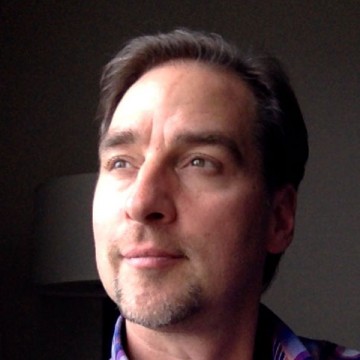
About the Author:
Much of Curtis Ogden's work with IISC entails consulting with multi-stakeholder networks to strengthen and transform food public health, education, and economic development systems at local, state, regional, and national levels. He has worked with networks to launch and evolve through various stages of development.
Originally published at Interaction Institute for Social Change
featured image found HERE

Network Weaver is dedicated to offering free content to all – in support of equity, justice and transformation for all.
We appreciate your support!
donate in the box above or click here
Coaching for Awareness-Based Systems Change
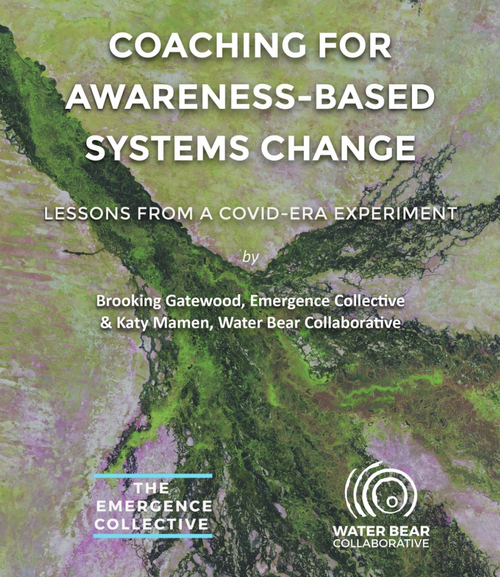
In the fall of 2019, a few of the founders of the Illuminate network (including CoCreative, Garfield Foundation, McConnell Foundation, and Academy for Systems Change) collaboratively hosted a gathering of systems change “capacity-builders” who work as independent consultants or in small collectives as facilitators and advisors, from the US, Canada, Mexico, UK, EU, and First Nations. This was the first time these practitioners had been invited to meet together with peers to share their perspectives on the state of the field. The North American contingent of the group continued on through the upheavals of the pandemic, meeting virtually in 2020 and 2021 to explore themes of equity and integrating health and healing into systems change practice, as well as launching a pilot pairing senior and emerging practitioners to explore what systems-centric approach to leadership coaching might look like.

CLICK HERE to learn more about this unique systems coaching pilot or visit the Network Weaver resource page to download the full article.
Check out the infographic below for some of the key insights from their COVID-era dialogues on the state of the field of systems change.
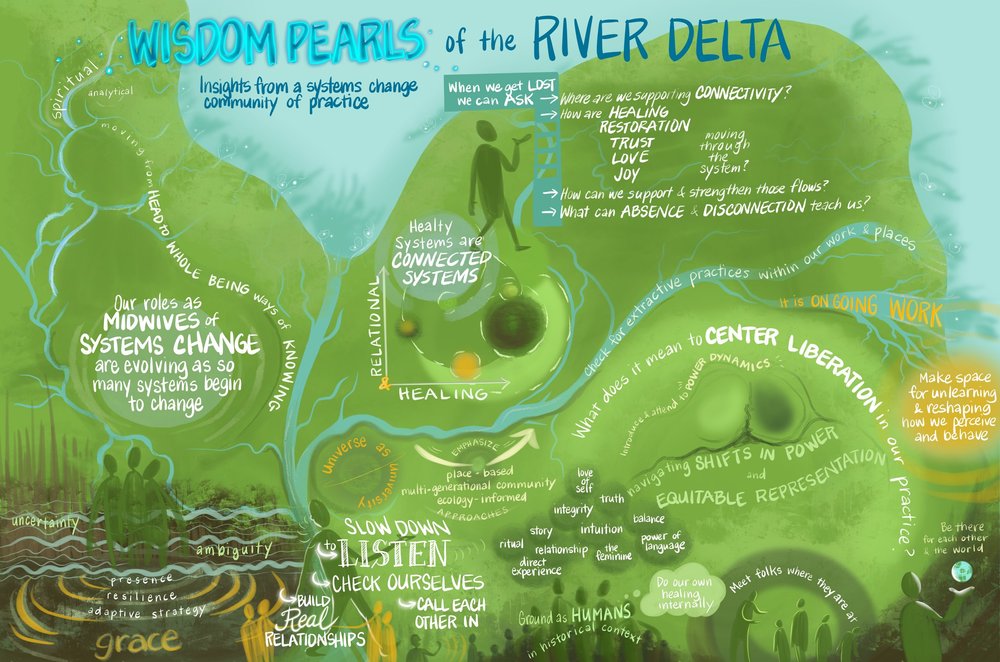
Learn more about the wisdom pearls HERE

You can also download a pdf with a link to this information to save to your personal library by visiting the Network Weaver Resource Page.
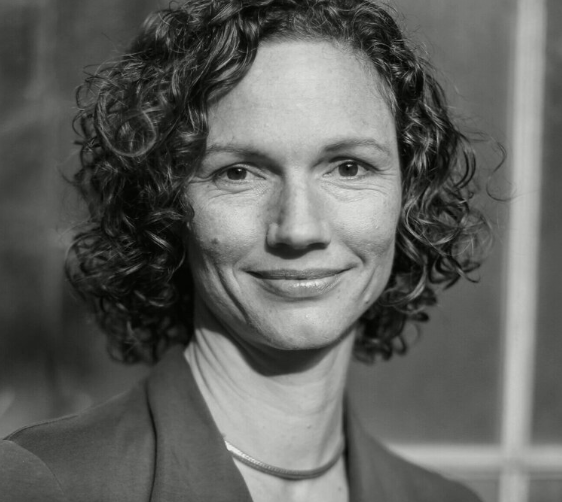
Katy Mamen is passionate about participatory change-making approaches that account for the complexity of multiple, interconnectedness crises and diverse lived experiences. She brings thoughtful and committed partnership to social sector clients advancing transformative systems change, drawing on expertise in social change strategy, facilitation and group process, systems theory, collaborative networks, and organizational development. In addition to process expertise, her work is informed by a strong background in economic justice, food & farming, water issues, and rural equity.
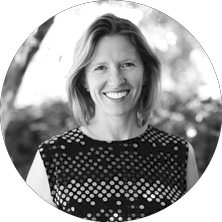
Brooking Gatewood helps leaders and groups clarify and enact the change they want in themselves, in their workplace, and in our shared world. At heart, her work is about co-liberation from systems of ‘power over’ and moving toward systems of ‘power with’ that honor individual agency as well as collective interests and wisdom. In practice, her coaching and consulting focuses on transformation across levels - from individual and team mindsets and behaviors to large-scale policy and systems change.
Originally published at IlluminateSystems.org

Network Weaver is dedicated to offering free content to all – in support of equity, justice and transformation for all.
We appreciate your support!
donate in the box above or click here
On Collective Liberation and Natural Networks: an Interview with LLC’s Nikki Dinh and Ericka Stallings
I was able to meet with the Co-Executive Directors of the Learning Leadership Community, an organization I’ve long admired for their commitment to a community-focused transformative leadership practice. This past year, LLC was able to return to a co-Executive Director model which has freed up both Nikki Dinh and Ericka Stallings to focus on shifting LLC towards a more liberatory transformative leadership model. Part of this shift involves supporting the ongoing work of Network Weaver as it provides tools and resources to scale up access to weaver spaces and serve as a platform that amplifies the impact of BIPOC weavers and leadership practitioners on their communities. More deep-rooted shifts involve the difficult work of making even more room for thinking about and practicing liberatory frameworks that make equity work within this system sustainable for people who come from othering backgrounds.
“We look at leadership as a tool for transformation. To say that we are “equitable” within this current system, which is in and of itself inequitable is not necessarily our goal. Racial Equity being a path towards liberation, that's the change that we're trying to seek.”
– Ericka Stallings
In this interview, we talk a little bit about both Nikki and Ericka’s vision for LLC, liberatory processes, how community is the first network we come into, and why the work LLC is doing matters right now. Nikki and Ericka’s responses have been edited for clarity, but all effort has been made to maintain the integrity and spirit of their words.
* * *
Can you talk to us a bit about liberatory processes?
Nikki: “Liberatory” is a why, but it's also a how for me, because it's not a destination. It’s not like race equity, where you can measure your way to a certain point in the data and then it switches over to being more equitable for certain communities. Liberation, collective liberation, co-liberation, however you want to see it, is going to be a forever journey. We’ve seen what it does to our community members when non-profits focus only on getting the data or policy right—there’s a disconnect. And so how we do it really matters to people. Ericka and I always talk about what it takes to make a movement or network whole. How do we get to just work in just ways? It's not the technical titles like executive director and weaver, though we need those too, but what we know from our experiences is that we need everybody--we need somebody like Ericka’s mom who will nurture you, and we need an aunt who is always keeping an eye out for all the resources and trying to connect people to them. The “how” stems from a deep love for people. We’re trying to bring some of that back, some of that love and care for each other while we're doing this really difficult work.
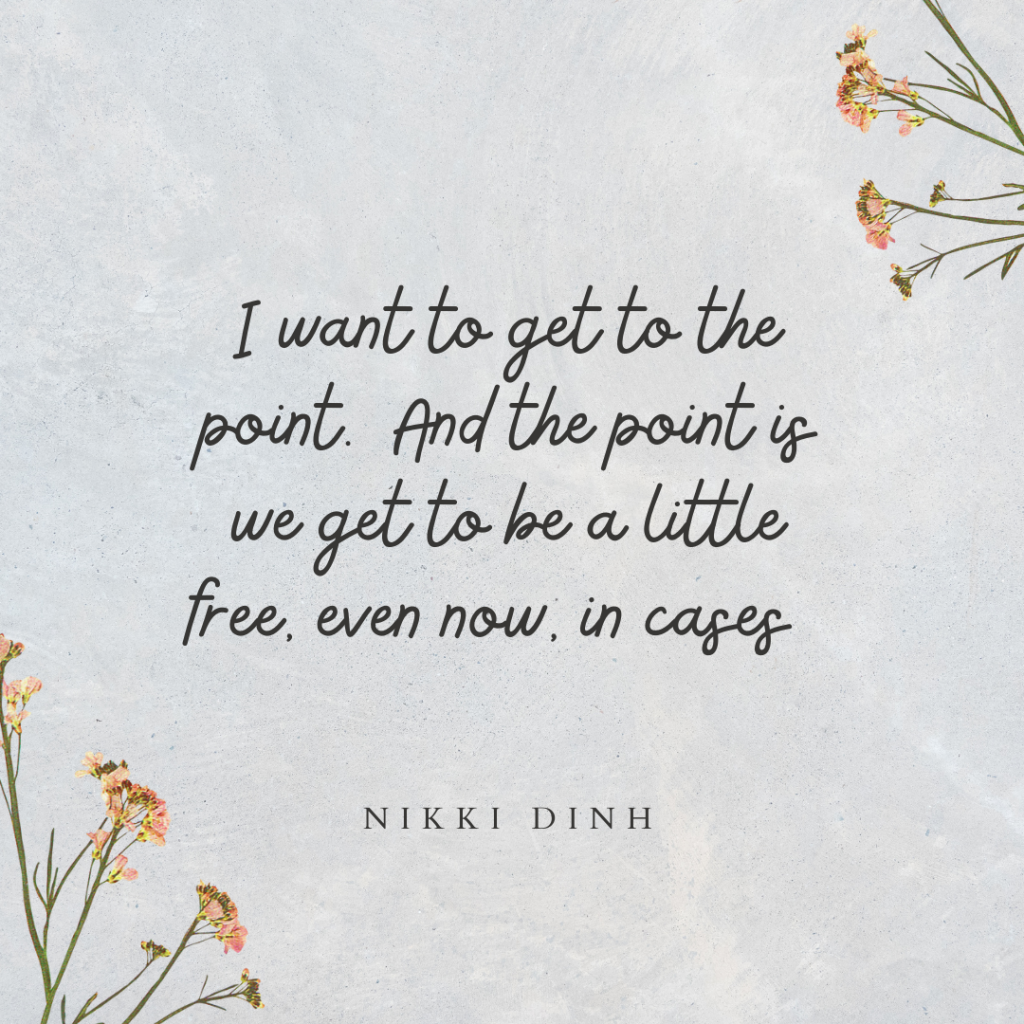
What's one thing that that Network Weaver, or even LLC is doing differently, to transform the field of leadership?
Ericka: We are shifting towards a different lens that asks: what does a collective liberation look like? What does it mean when we free ourselves and each other? That’s one change. We are also getting clear about what these questions around equity, liberation and transformation mean in different contexts. LLC is mostly domestic, whereas Network Weaver is international and therefore has a broader reach. Networks are not just interesting tools, but they actually result in change. How can we explore what a change ecosystem looks like and the role leadership plays in that? How can really thinking about the needs of varying stakeholders, and not just being focused on terms and buzzwords that are exciting, help us capture all the work that goes into the change process? How do we support the leadership of all of those other folks who are in that ecosystem? Holding space for those questions and others is one way I think we’re committed to doing things differently.
What is your vision for Network Weaver?
Nikki: Network Weaver is a tool and resource. Ericka and I have this analogy about pollination. In areas where bees and butterflies and all the natural super pollinators are dying off, there are efforts to self-pollinate or find other ways to pollinate. And that's why Network Weaver is so valuable to me. It's like an artificial butterfly. It’s trying to help solve a crucial short-term problem until we can get that butterfly population back up. It’s a useful tool to scale when we need to scale, but how can we also pay attention to what makes bees and butterflies thrive in the natural habitats because the goal always is to have natural networks. Growing up in a refugee community, we had a large cultural network and within that so many alternate systems to meet the needs of the community. You need to borrow money? You need prescription pills? There were people doing that for each other! I envision us also zooming out to see and appreciate a natural network of weavers that continue to connect and build alongside the Network Weaver space.
What's your vision for LLC?
Ericka: Oh, we have lots of ideas and hopes and dreams for LLC! Something that I hope doesn't change is that LLC is very relational. LLC is very people-focused, we care about people. It’s also a space that welcomes joy. And that's something we want to grow into. A vision that I have for LLC is that it is a space where people who want to lead in liberatory ways, and folks who want to support leadership that is transformational and liberatory, can collaborate. We are a space of experimentation, innovation, and community. I hope as a consequence of our work, that there are stronger movements for justice.
One of the things that I appreciate about LLC is that we are eco-centric rather than egocentric, which is something that our founder, my predecessor, used to say frequently, and I really value not having to make sure everyone knows that “it's us.” It’s more important that the work happened, rather than the credit be attributed to us. That focus on the communal, the collective, the ecosystem is something that remains part of the vision that I have for LLC. Our work has not just been about products and deliverables, but liberatory processes, and that has made the work fulfilling and joyful.
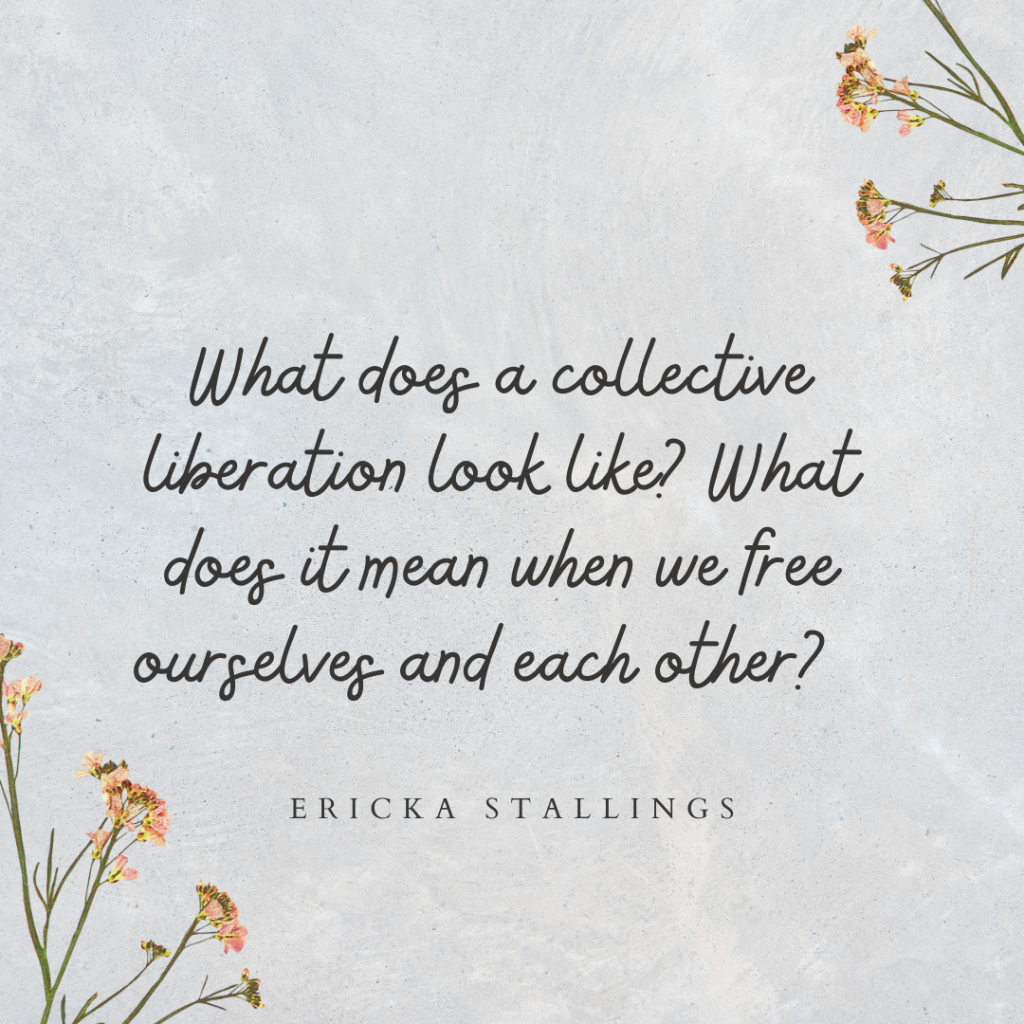
What’s a commitment you made to yourself during the pandemic that you intend to keep?
Nikki: I have made a commitment to root for me. It’s still a journey. I am surrounded by people like my sisters, my partner and my children, my collaborator Ericka, who think I'm so great. And I want to take on some of that energy and be like, I'm going to do it for me. And that's what has really emboldened me to be like, alright, look, we're doing liberatory work, we're gonna go there, because, you know, I was a lawyer—I know you can’t undo that kind of systems thinking overnight. I’ve had to work on this and believe in valuing this. And I've also known, because of my upbringing, that we can do better. So rooting for me is rooting for all folx entrenched in systems, for us to be a bit freer.
Ericka: One, I mean I have one commitment that I've made that is unexpected. And it's a group of women that I have coffee with, like virtual check ins with weekly.. We've been doing it since the beginning of the pandemic. The funny thing is we were not intimate friends before. We started this gathering to have regular conversations with agendas and learning goals and things like that, and they evolved or de-volved, depending on how you think about it, into very, very rich, deep emotional connections. I'm very proud and happy that I've continued to commit to these weekly check ins and also to those relationships.
Is there anything that you're like most excited for this year?
Nikki: We're doing some longer-term strategy work. In the next three to five years we will go bold with liberatory programming. Our lens for Network Weaver, for example, will be situated under the liberatory program side of the house. Everything we do will have to bring a kind of outside-the-system thinking which includes bringing in the perspectives and interests of people who are typically excluded from our systems. That said, I'm really excited to work with more people who are from other backgrounds, like refugees and trans folks, and queer folks, and people with disabilities. I have learned so much from people outside of our systems that I'm really excited for others to get that wisdom too.
Why LLC? Why Donate Now?
Ericka: One of my favorite quotes is: “if you give me a fish, you have fed me for a day. If you teach me to fish, you have fed me until the river is contaminated or the shoreline seized for development. But if you teach me to organize, then whatever the challenge, I can join together with my peers and we will fashion our own solution.”
With that in my mind, my hopes for the ongoing work of LLC and Network Weaver are in that vein; of prioritizing the people who are addressing issues in their communities and how folks in this space are supporting them. I'm hoping that the blog series we hope to launch soon will address how people are affirmatively and explicitly stepping back so that the people directly impacted come to the forefront. And I'm hoping these stories about the material, communal, and spiritual transformation that's happening help us see the real impact people are having on the communities they care about.

donate in the box above or click here
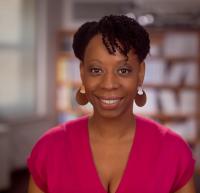
Ericka Stallings is the Co-Executive Director of the Leadership Learning Community (LLC) a learning network of people who run, fund and study leadership development. LLC challenges traditional thinking about leadership and supports the development of models that are more inclusive, networked and collective. Prior to LLC, Ericka was the Deputy Director for Capacity Building and Strategic Initiatives at the Association for Neighborhood and Housing Development (ANHD), supporting organizing and advocacy and leading ANHD’s community organizing capacity building work. Ericka also directed ANHD’s Center for Community Leadership (CCL) which provides comprehensive support for neighborhood-based organizing in New York City. At ANHD she formerly directed the Initiative for Neighborhood and Citywide Organizing (INCO), a program designed to strengthen community organizing in the local neighborhoods. Before working at ANHD she served as the Housing Advocacy Coordinator at the New York Immigration Coalition (NYIC), managing its Immigrant Housing Collaborative. In addition, Ericka co-coordinated the NYIC’s Immigrant Advocacy Fellowship Program, an initiative for emerging leaders in immigrant communities. She received her undergraduate degree from Smith College, studied International and Intercultural Communications at the University of Denver and Urban and Environmental Policy and Planning at Tufts University.
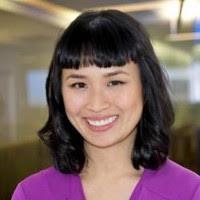
Nikki Dinh is the daughter of boat people refugees who instilled in her the importance of being in community. Though she grew up in a California county that was founded by the KKK, her family’s home was in an immigrant enclave. Her neighborhood taught her about resistance, resilience, joy and love.
Her lived experiences led her to a career in social justice and advocacy. As a legal aid attorney, she learned from and represented families in cases involving immigration, domestic violence, human trafficking, and elder abuse. Later, she joined the philanthropic sector where she learned from and invested in local leaders, networks and organizations throughout California. At Leadership Learning Community, she is excited that her work will continue to be guided by the belief that the people in communities we seek to serve are best positioned to identify and create solutions for their community.
About the Author

Sadia Hassan is a writer, organizational consultant and network weaver who enjoys using a human-centered approach to think through inclusive, equitable, and participatory processes for capacity building. She is especially adept at facilitating conversations around race, power, and sexual violence using storytelling practice as a means of community engagement and strategy building. She has received a Masters in Fine Arts, Poetry at the University of Mississippi and a Bachelor of Arts in African/African-American Studies from Dartmouth College. You can read more of her work at Longreads, American Academy of Poets, and The Boston Review. https://sadiahassan.com
feature photo by Lee 琴 on Unsplash
Networks: Resourcing Relationships and Interdependence for an Equitable Future Now
Networks for Equity and Systems Change
The events of the past year have made clear what many in and outside of philanthropy already knew: that equality in resource distribution is not equity, that much of what was thought impossible to change – telework policies, reporting requirements, fiduciary responsibilities – is suddenly possible, that what we need to shift big systems is interdependence (not codependence), and that what is needed for this shift to happen begins with strengthening our relationships with one another – as individuals, organizations, and communities.
Networks offer a structure for linking people and groups of people with a shared vision and shared values to build and strengthen the relationships necessary to shift big systems. By offering us opportunities to work together in ways that challenge us to build different understandings of and relationships to power and to each other, we are able to move in more interdependent and interconnected ways.
Many individuals and organizations – particularly those rooted in Black and Native communities, queer communities, and immigrant communities – have experience working in networks both rooted in and working to advance equity and justice yet are often not sufficiently resourced for this work. Other entities, including many funders, are bringing increased attention and resources to working in this way and yet these many groups that are poised to resource networks are still just learning about how to do so in ways that align with equity and manage disproportionate power dynamics.
In this moment of possibility for reimaging big systems to live our imagined future of love, dignity, and justice now, we are sharing some learning from a late-2019 gathering of nearly 70 network funders, practitioners, and participants about how network practitioners and some funders are nourishing and growing networks for equity and systems change.
An Experiential and Embodied Approach to Learning in Networks
The Networks for Equitable Systems Change gathering was co-created in partnership with Change Elemental, Uma Viswanathan and Matt Pierce at the Robert Wood Johnson Foundation, and a design team of network practitioners including Allen Kwabena Frimpong, Aisha Shillingford, Marissa Tirona, Robin Katcher, and Deborah Meehan. The group came together to engage with practices for building, resourcing, and sustaining networks. Together, we set out to learn about the following questions:
- How have funders and other organizations worked together in networks that promote equity and systems change?
- What are the barriers to resourcing networks for equitable systems change and what would it take to shift those barriers?
- What is the personal work and way of being needed to fully engage in networks, equity and systems change?
While desk research and interviews can be useful learning tools, we decided to take an experiential and embodied approach to learning about our questions. By bringing convening participants into the experience of network building in real time, we were able to create shared experiences that led to shared understanding about what it takes to build and sustain networks that can shift systems.
We can’t shift systems when we’re only touching one part of the elephant. We need spaces where the whole ecosystem comes together, bringing various perspectives that can give us a picture of the whole. Rather than host separate conversations with funders, intermediaries, and grassroots organizations, the gathering brought together many parts of network ecosystems to discuss how folks were experiencing power sharing within networks.
Below are some of the ways the experiential design of the convening – in addition to the deep expertise and knowledge that participants brought to bear – helped co-create our elephant and answer some initial questions about networks…
We Challenged Dominant Ways of Building Alignment through Rigid Frameworks and Definitions and Instead Reached Shared Understanding with Storytelling
Through experiential learning and storytelling, convening participants aligned on shared definitions for what we mean by a network as well as successful practices for building, sustaining, and resourcing networks.
With our design team, we co-created a learning network that engaged people with different access to resources, different kinds of power, and different experiences and roles in networks. We were concerned about bringing so many different folks together to talk about networks when we all were coming in with these different experiences, definitions, etc. We faced the same pressure points that networks face: how do we distribute resources across this group and compensate people for their time and labor? How can we facilitate more open discussions with transparency and deeper sharing among groups who have different priorities, expertise in networks, roles in the movement ecosystem, and kinds of power? Where do we need alignment and shared definitions and where should we hold generative tensions and conflict?
Initially, we considered aligning the group through some shared definitions and research in networks before coming together, but that process seemed time consuming and didn’t fully honor the wisdom in participants’ different perspectives and experiences. Instead of creating written definitions and a compilation of research to align participants on a common framework, we had attendees prepare spark stories – a short story that communicated their experiences and challenges in a network when working across funders, individuals, grassroots organizations, and other entities. Participants shared stories in small groups and each group created an image to show similarities and differences in themes across stories. The storytelling accelerated shared understanding in small groups and highlighted the multiple perspectives in how participants understand and experience networks.
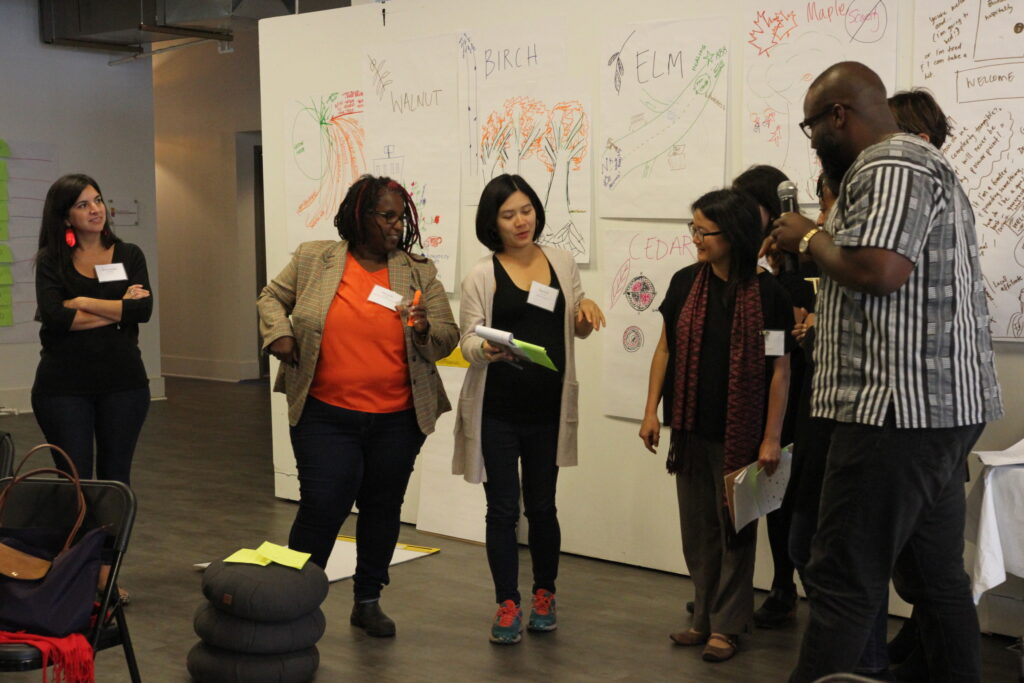
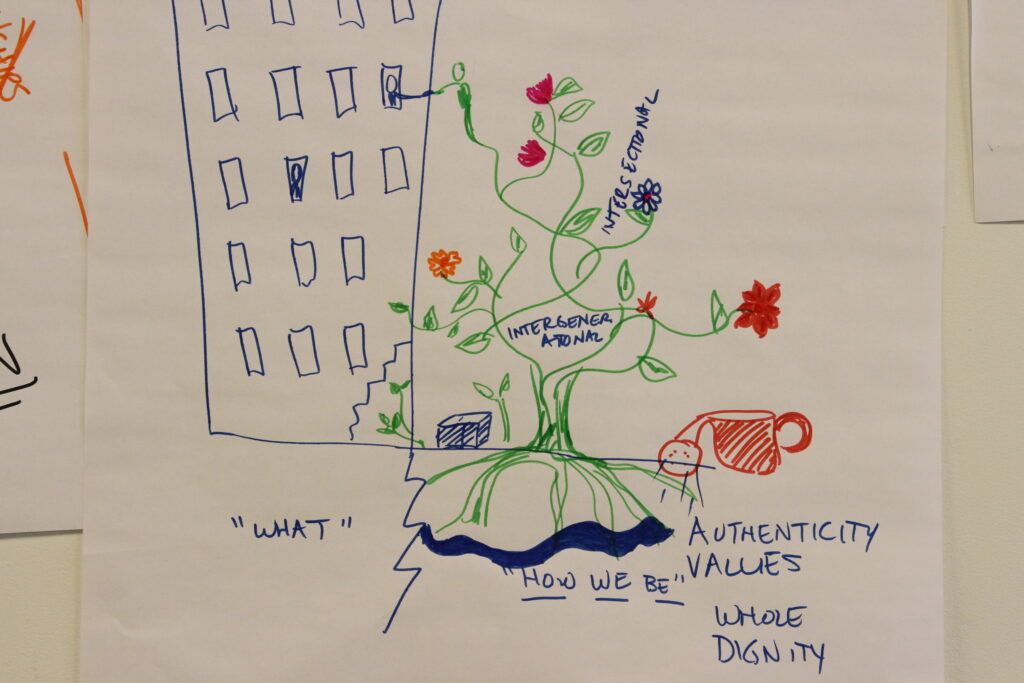
Many participants also shared their spark stories in video conversations. In this video, design team member Allen Kwabena Frimpong and Rachel O’Leary Carmona from AdAstra Consulting share their own definition of a network.
We Used Art Making to Illuminate Power Differences and Start Deeper Conversations about Power Sharing in Networks
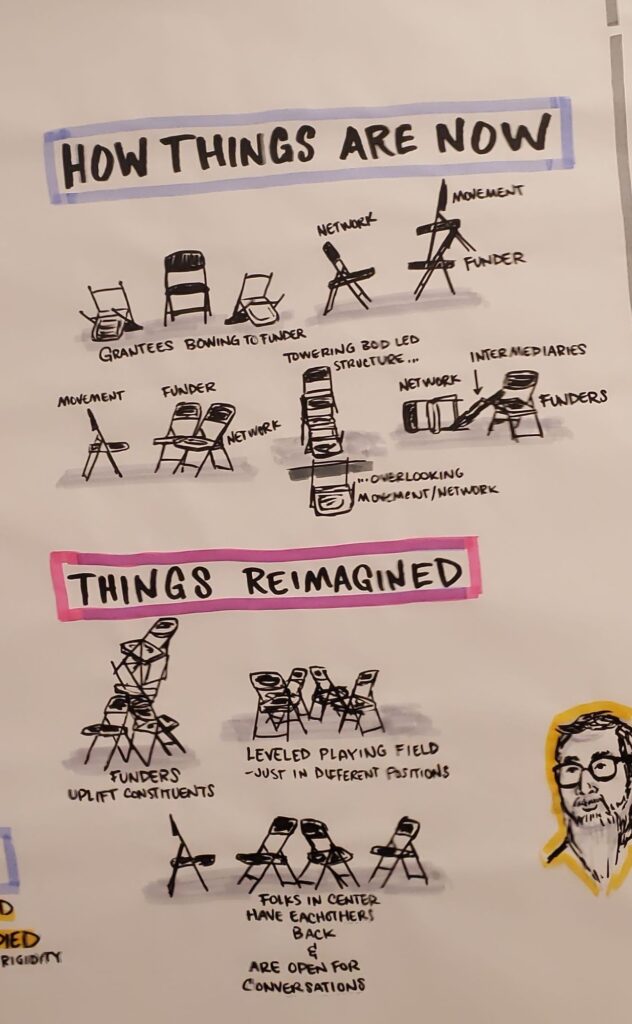
Navigating power differentials – including naming and managing them – was a key element in supporting shared learning in this diverse space and also mirrored the ways in which engaging with power can create generative conflict that supports network building or exacerbates unnamed tensions that derail it.
At one point before the convening, some funders were feeling nervous about their power relative to other groups and considered having a separate space. We ultimately decided against that and instead brought funders together to discuss how we might acknowledge and visibilize power differentials (rather than obscure them). We also saw this as a way for funders to build practices for being in spaces where they have more power related to resourcing (such as in a network).
In an exercise from Theater of the Oppressed participants could make visible the power differences between funders that financially resource networks and other network participants. Participants positioned chairs differently based on their vantage point and each new sculpture was in dialogue with the previous one, creating space for different perspectives in support and in tension with each other.
In this spark story, Sage Crump, Cultural Strategist, shares her experience with power as an intermediary navigating the relationships between networked organizations and funders.
Starting with this creative exercise created a bridge to harder conversations about the barriers to equity in resourcing networks such as how money is distributed across network participants, inappropriate use of power, or challenges that come up when there is misalignment between the equity values of a network and the culture of a funding institution.
Convening participants Eugenia Lee of Solidaire and Rajiv Khanna from Thousand Currents discuss what it takes for people inside large funding institutions to align foundation culture with equity and other values needed to better support networks.
We Made Space for New Conversations about Resource Sharing and New Processes for Resource Distribution
Equity should inform how we resource people to be and learn together across power, identity, and roles and then to do together (in networks). Yet external systems, norms, and habits can often inhibit us from living out our values. One example of this is the radical redistribution of resources in neworks, which requires leaning into new practices for how we work together and support each other given our proximity to power and resources.
To financially support people’s attendance at the gathering and their contributions to the space, we created an equity fund. The set-up and distribution of the convening’s equity fund provided the group with an opportunity to lean into these new ways of being. It required vulnerability from participants in asking for what we need and for those holding financial systems to figure out creative ways of reducing the administrative burden on participants, for example by offering stipends rather than reimbursing receipts.
To guide us in these new (to some) ways of being and doing, we created a set of fund principles. Adapted from Leadership Learning Community, the principles included:
- People can ask for what they want and need
- Adopt an abundance mindset (we can always find a way to get more)
- Function with trust, no questions asked
- Give people examples of what they might use funds for (e.g., lodging, childcare, funds to cover a missed day of work for hourly professionals, etc.)
At first, people asked for very little. After more enthusiastic nudges and encouragement to lean into the principles and the discomfort of asking (for example, by looping back to confirm, clarifying our equity principles, and sharing more examples of what people have asked for) more participants felt comfortable asking for what was truly needed.
The initial hesitancy from participants prompted us to think more about who feels entitled to ask for equity funds and how that may relate to our individual sense of worth (eg. how much do I really need this?) and relationship to the collective (e.g., how much might others need relative to me?).
During the convening, we shared what we learned from managing our equity fund in this meme-filled presentation, including how we pushed for a “no receipts” policy, which was challenging to navigate from a compliance perspective but saved a great deal of administrative time.
In this spark story, convening participants Elissa Sloan Perry from Change Elemental and Alexis Flanagan from the Resonance Network share another example of resource distribution within a network, including the vulnerability and trust needed to talk openly about personal wealth as a way towards more equitable resource distribution.
While some of the experiential learnings from the convening are captured above, network practitioners and funders also brought together learnings from past experiences in leading with equity and navigating power differentials within networks including how funders operate in networks; the different forms and shapes networks might take; capacity, impact, and infrastructure needs in networks; and ways of being needed to build, resource, and support networks.
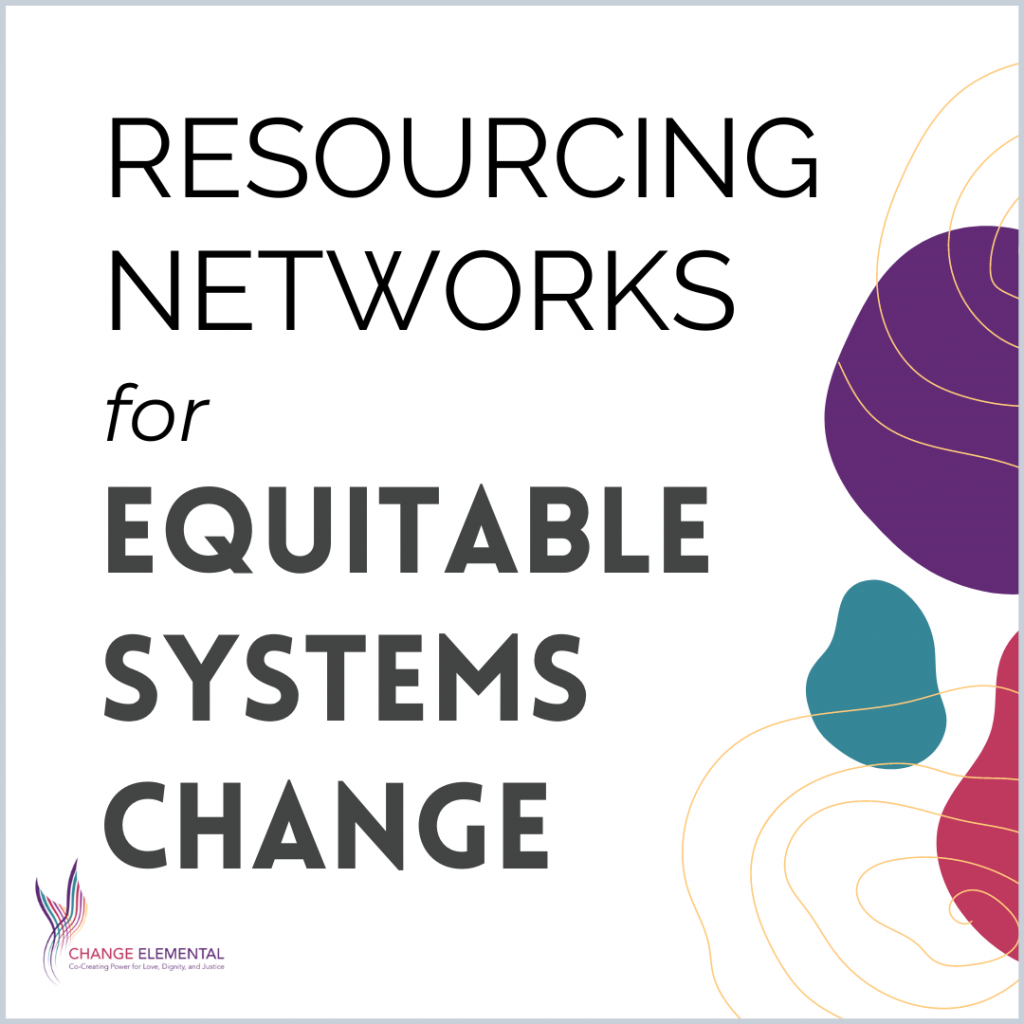
To dig into more stories and insights as well as many other resources about networks, see the report, “Resourcing Networks for Equitable Systems Change: Perspectives from Funders, Intermediaries, Individuals and Organizations on How We Fund and Support Networks for Equity.”
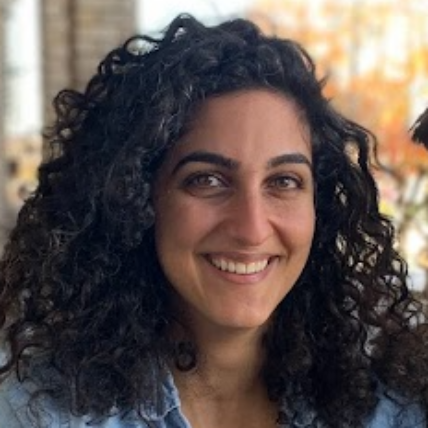
Natalie Bamdad (she/her/hers), joined Change Elemental in 2017. She is a queer and first-gen Arab-Iranian Jew, whose people are from Basra and Tehran. She is a DC-based facilitator and rabble-rouser working to strengthen leadership, organizations, and movement networks working towards racial equity and liberation of people and planet.
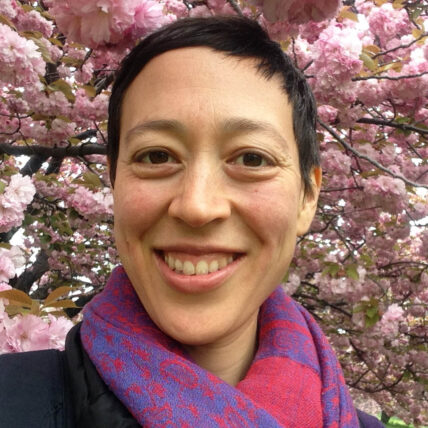
Alison Lin (she/her/hers) supports leaders in authentic collaborations to transform people and systems toward love, dignity, and justice. With over 20 years of leadership experience, she draws from work in race equity, complex systems change, organizational development, learning through experimentation and life with a focus on issues affecting LGBTQ and BIPOC communities. She joined Change Elemental in 2017.
Video recording, editing, and photos by Breathe Media Group
Graphic recordings by Brandon Black
Cover photo by Brian Stout
Originally published at Change Elemental

Network Weaver is dedicated to offering free content to all – in support of equity, justice and transformation for all.
We appreciate your support!
donate in the box above or click here
Inside philanthropy and networks
Collective Mind hosts regular Community Conversations with our global learning community. These sessions create space for network professionals to connect, share experiences, and cultivate solutions to common problems experienced by networks.

In July 2021, Collective Mind hosted a unique Community Conversation panel discussion about philanthropy and networks. The session featured experts who work across the philanthropic space and have deep experience with networks ranging from global and national to hyper-local levels and across the gambit of social causes. The panel included Heather Hamilton, Executive Director of the Elevate Children Funders Group; Hilesh Patel, Leadership Investment Program Officer of the Field Foundation; and Katie Davies, Manager of Strategic Networks Initiatives with Ignite Philanthropy.
Together, the panelists explored the most urgent topics on their minds as funders and funder organizers for social impact, and talked about the trends they’re observing within philanthropy as it evolves toward more progressive causes and systems-change work. The panel helped elucidate some of the mysteries behind philanthropic decision-making and strategy, and sparked conversation among participants about how networks can reimagine their approach to and relationships with donors.
Highlights from the conversation
Understanding the decision-making structures of philanthropies helps network practitioners see their work through a donor’s lens and ask themselves the questions donors need to have answered. According to the panel, grant seekers commonly overlook the disconnect between program officers (POs) and where high-level funding decisions are made. POs are engaged on the ground, hearing directly from leaders and impacted communities, and have a current view of how the field is evolving to help advise on strategy. But ultimately, the Board of Directors controls the purse strings and sets the strategic agenda, with POsimplementing their decisions. Boards often prioritize questions of financial risk when making strategy and investment decisions, as well as the potential for fiscal return or reward. Among the range of types of foundations, POs will also have different levels of autonomy and instruction and at times won’t have a lot of flexibility in what they can fund. For networks, this can be particularly challenging as the work and value of networks can be amorphous and long-term, presenting more perceived risk from a business point of view.
Furthermore, networks may not necessarily fall into the framework of how traditional Boards think of how change happens. By design, networks work collectively toward a goal or contribute to a solution, rather than being able to specifically claim impact as their own, which makes their value proposition less straightforward and tangible than programmatic outputs and numbers. To demonstrate impact for donors and stakeholders, groups will sometimes overclaim and attribute wins to their own efforts, which misrepresents the work and can undermine the notion of a shared purpose. This can muddle the message of how collective impact happens and its value. It is therefore both on networks to be thoughtful, effective storytellers and have strong mission clarity, and on donors to educate and challenge themselves on their conceptions of the role and value of networks to affect systems change and foster an enabling environment where change happens.
Effective philanthropy requires more and better Board education. At its roots, philanthropy assumes a binary between those doing work on the ground and seeking funds and support, and those with resources who make big decisions on behalf of social change work but have limited practical knowledge or experience of it. This dynamic is challenging to navigate and also problematic. More and more, POs are working to educate Boards, which are often composed of wealthy individuals, about social change and to create change within foundations on the inside. There is emerging interest in the philanthropic space to learn from and with communities of change and to become more responsive and accountable across leadership and decision-making. Networks can help POs in their efforts to push and educate leaders within foundations to understand more about movements, collectives, and networks, and how donors can be more effective partners for change.
One way this can be done is through measurement methods that are more true to life and the work of social change. Donors often miss that funding networks means that progress won’t always be linear or explicit. Not only can fixed metrics and reporting requirements put a burden on grantees and have undue influence on the work, but limiting impact work to spreadsheets and formulaic processes can drive artificial outcomes and stifle the chance to glean real learning and value. For some foundations, there’s a new effort to pivot traditional reporting requirements and formats to be more flexible, conversational, and focused on multi-directional learning. These processes reframe accountability to center what grantees and donors can learn from each other about how the field is evolving, what role they all play, and what progress is being made. Doing the work to understand why networks and coalitions are important leads to understanding the nature of networks and systems change.
Donors are also starting to embrace how the image and dynamics of leadership are shifting through the work of networks and movements. Whereas traditional leadership is marked by an individual with certain, often normative characteristics and the vision and actions they represent, networks and movements center the leadership of groups and shared efforts. In networks, there is often no one leader: leaders are pulled from different sections to be part of broader work, and the model and mission doesn’t prioritize individuals as leaders. These challenges to traditional notions of what leadership looks like both mirrors and goes beyond how the face of leadership is already changing generationally. Understanding networks for how they upend traditional leadership is another way to educate philanthropic Boards about collective action and collaborative leadership.
Miss the session? View the recording here.
Thanks again to our amazing panelists!

Emily is a seasoned nonprofit and social impact expert with 14 years of experience leading social justice organizations and programs from community to global levels. She specializes in program innovation and design, strategy and leadership, facilitation, and peer learning. Among Emily’s career highlights, she has served as Executive Director of a grassroots women’s rights and anti-violence organization in British Columbia, Canada; spearheaded global peer exchange networks and innovative women’s leadership programming; and designed cutting-edge participatory research about GBV in remote and Native communities.
Originally published at Collective Mind
Featured image found here
Appreciate Network Weaver's library of free offerings and resources?
Donate below or click here
thank you!
